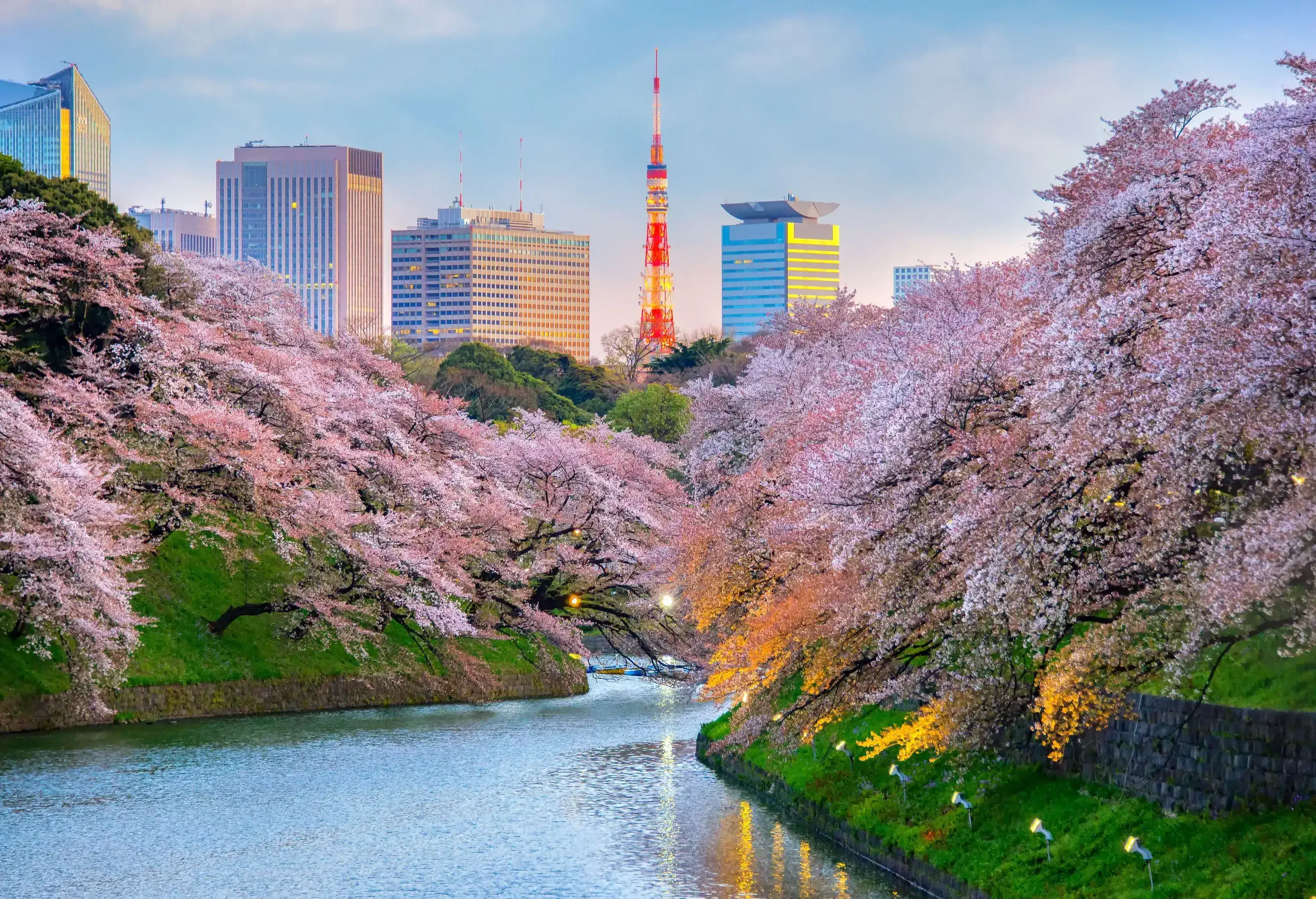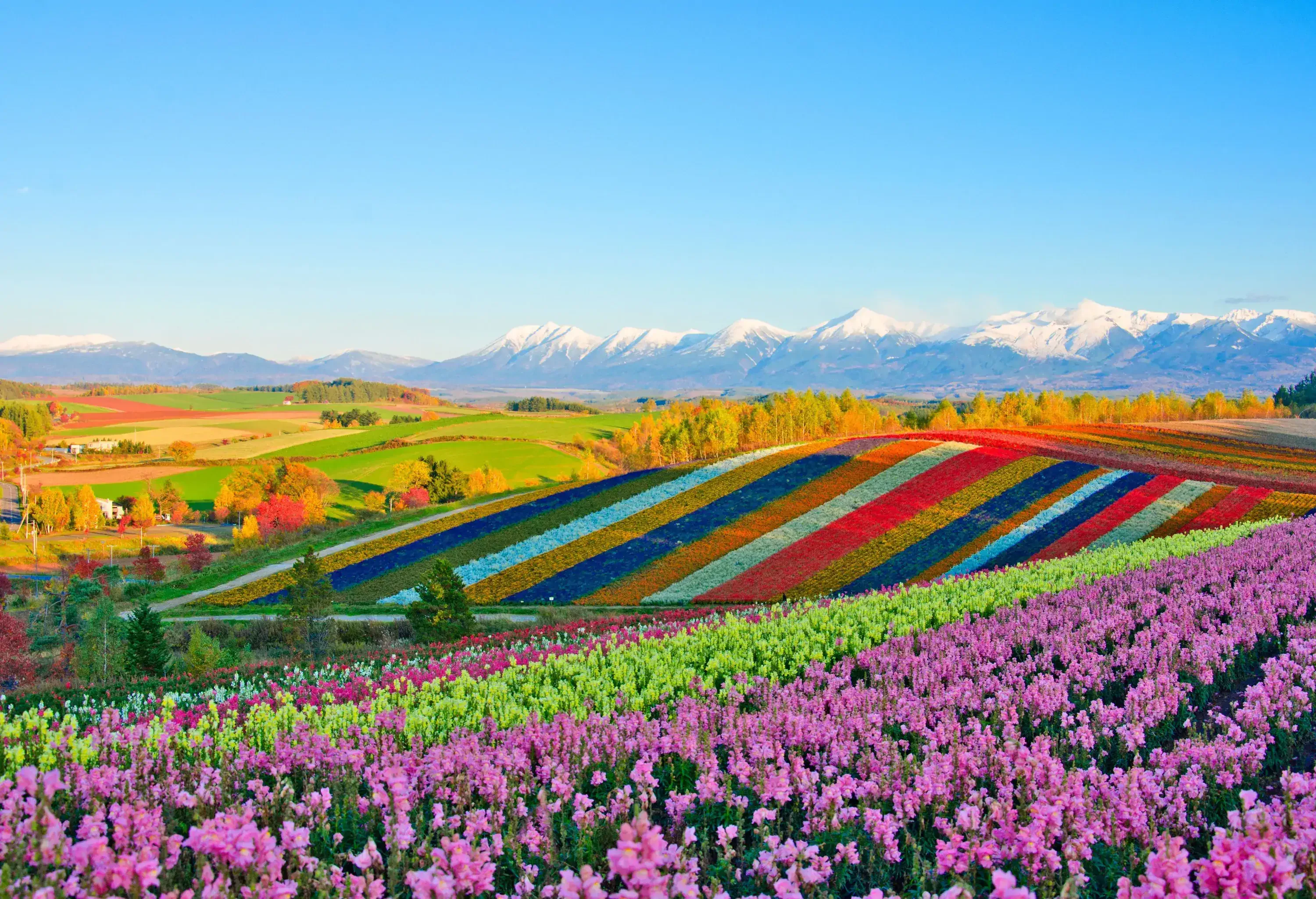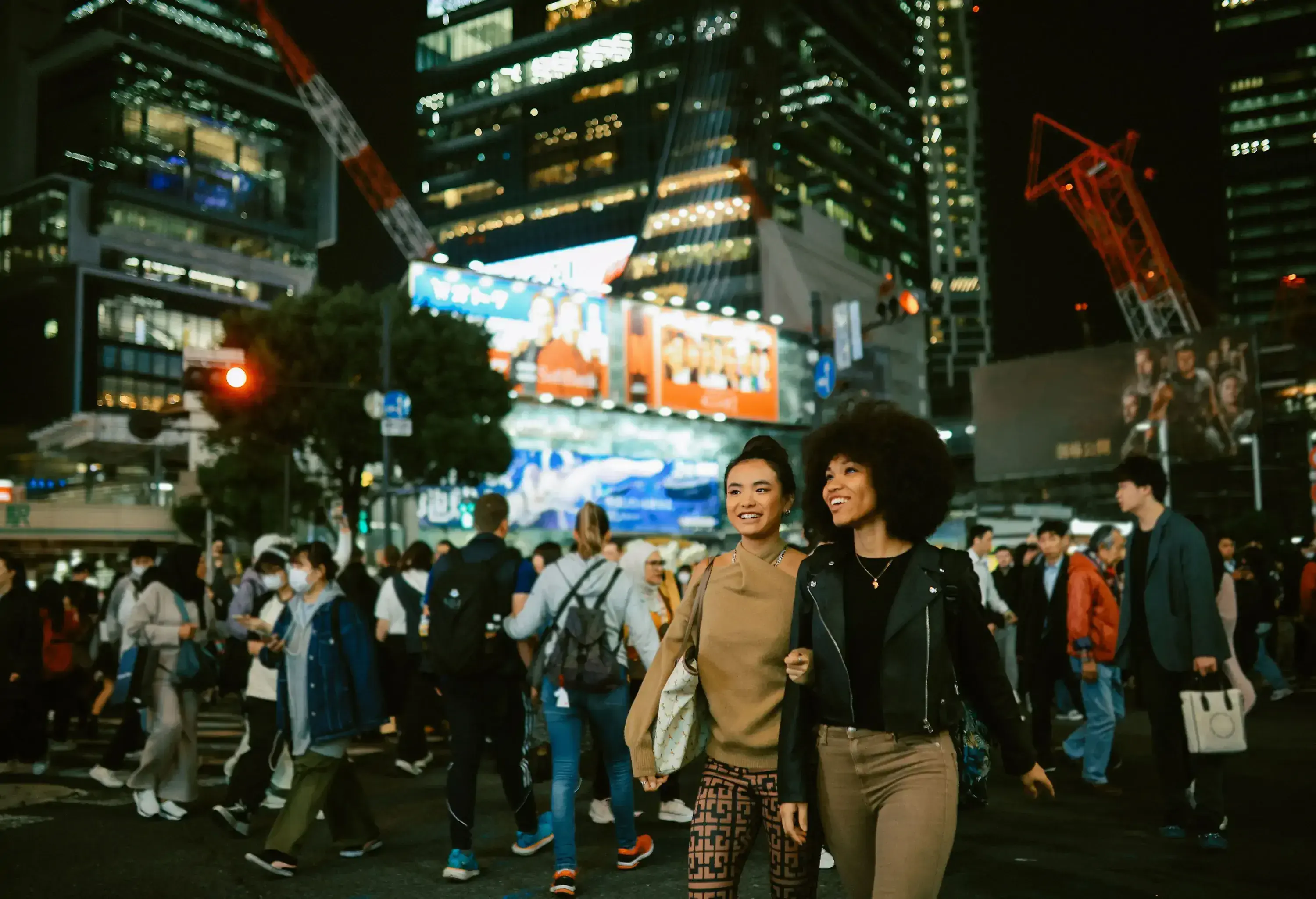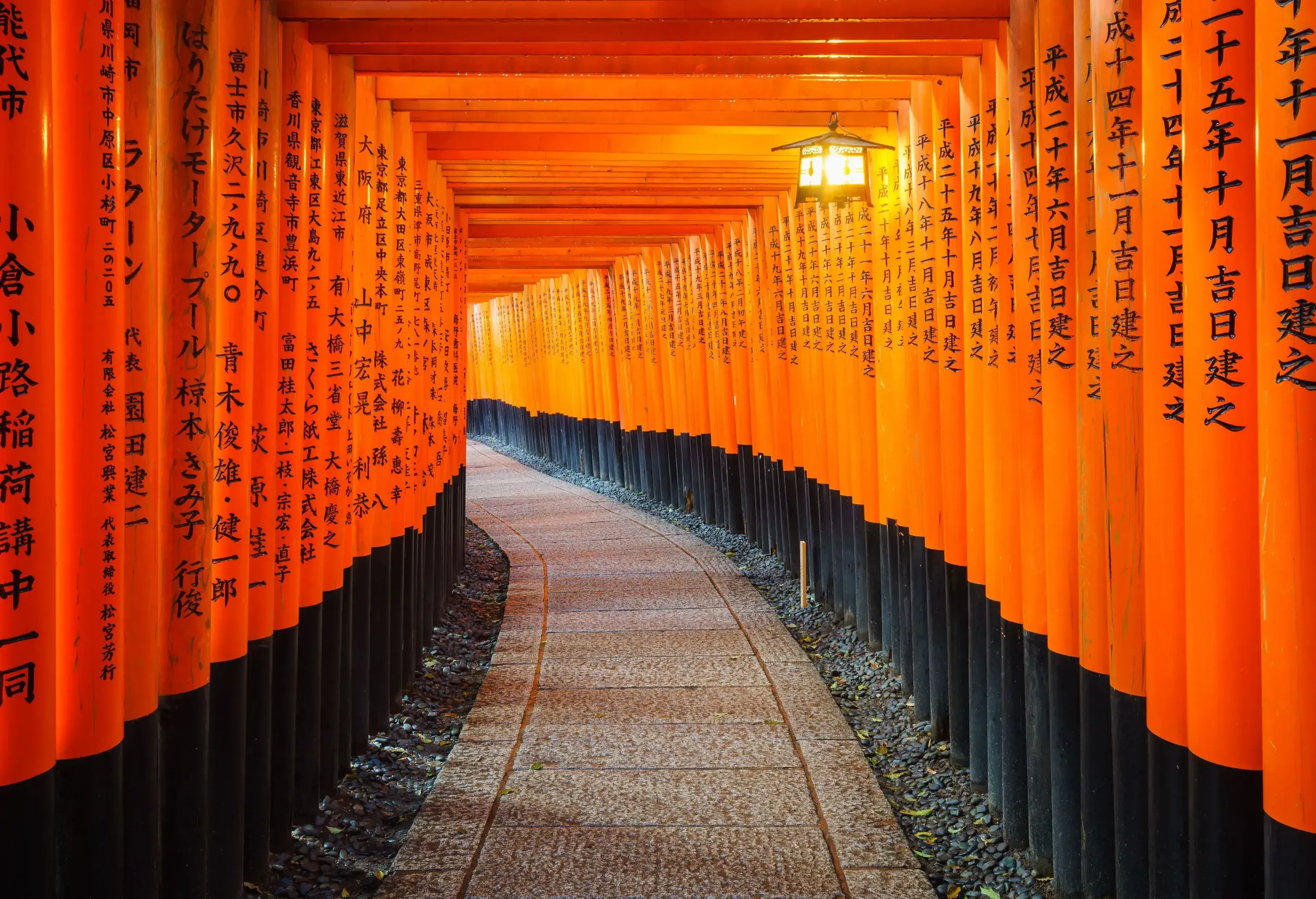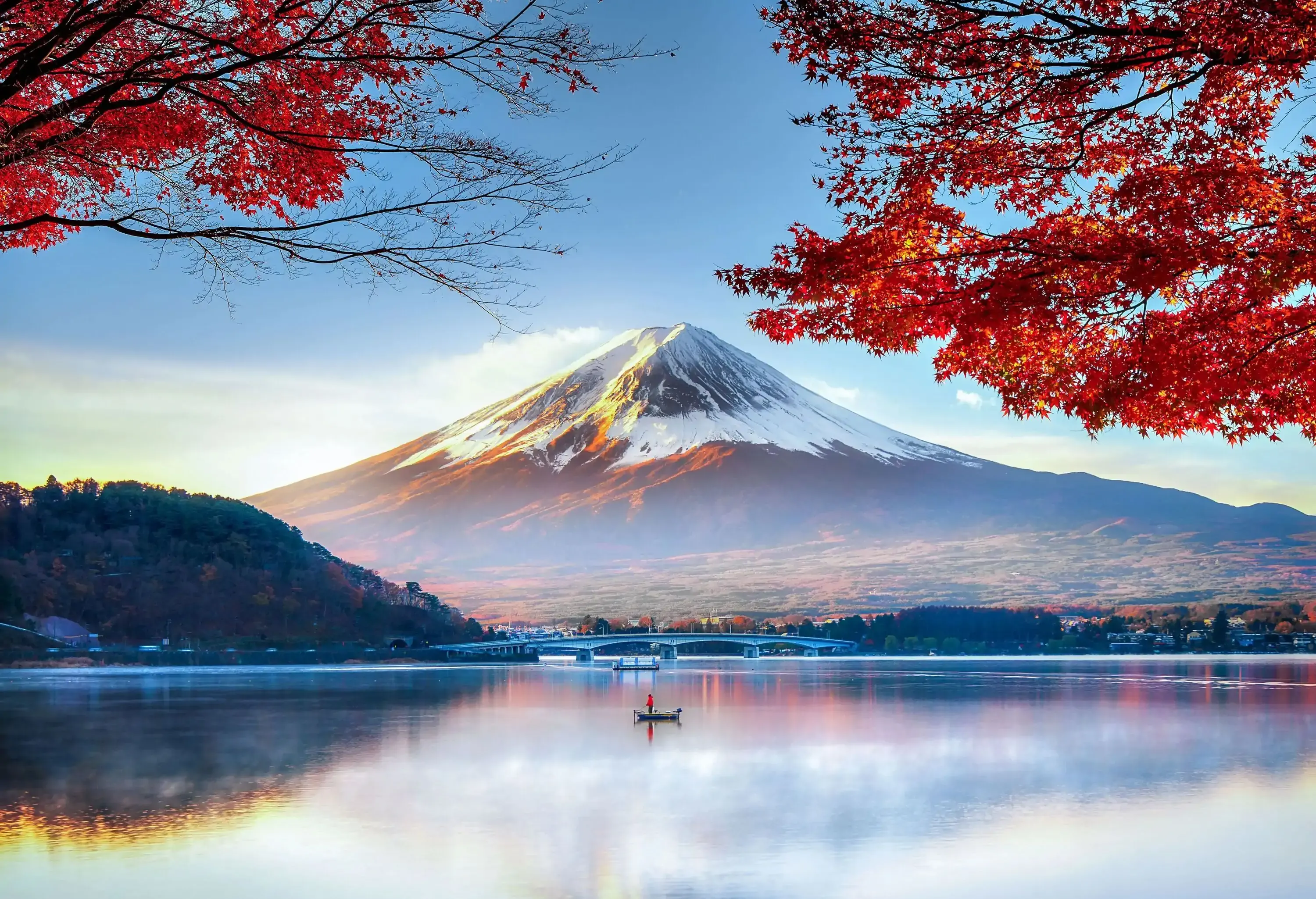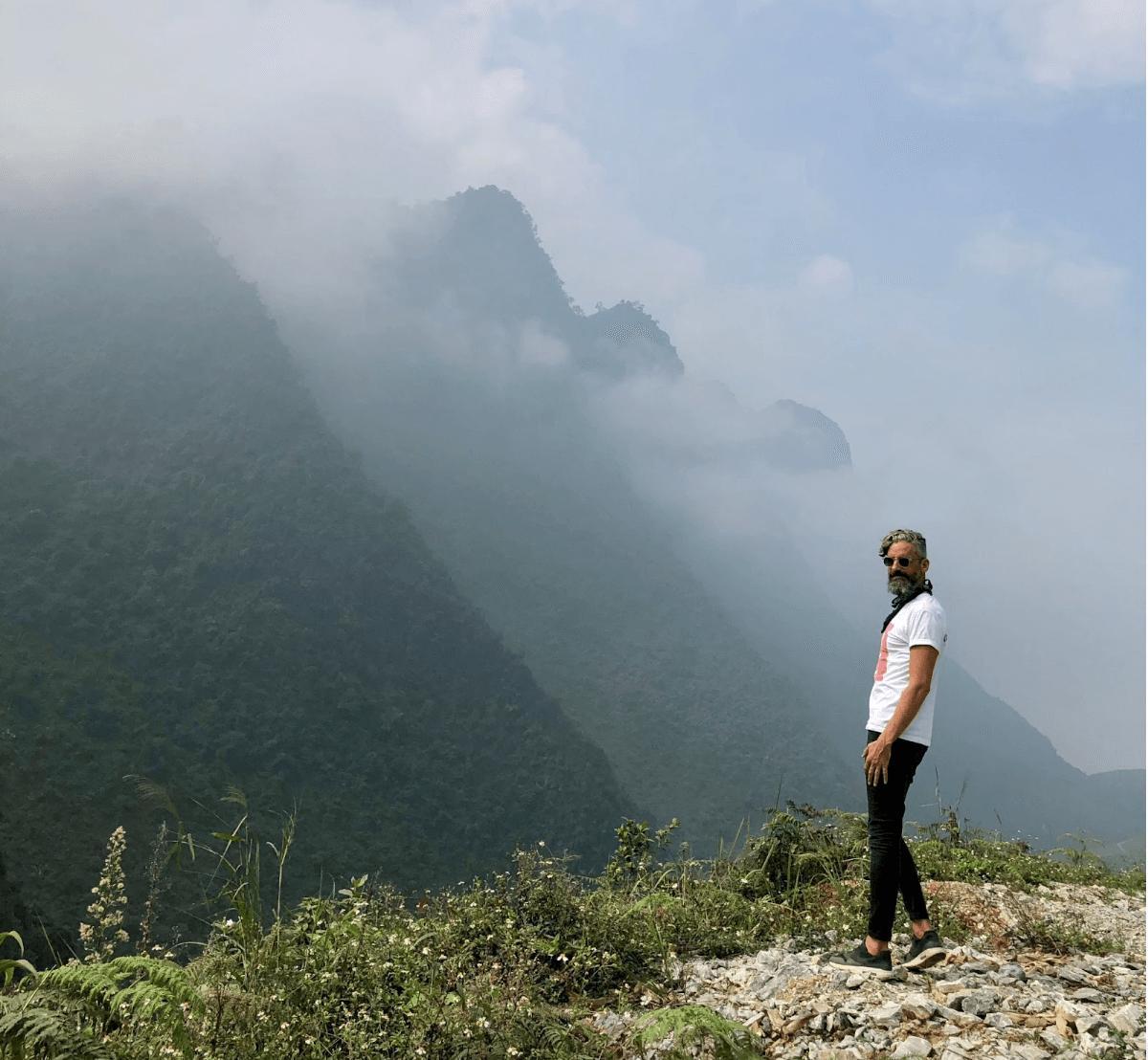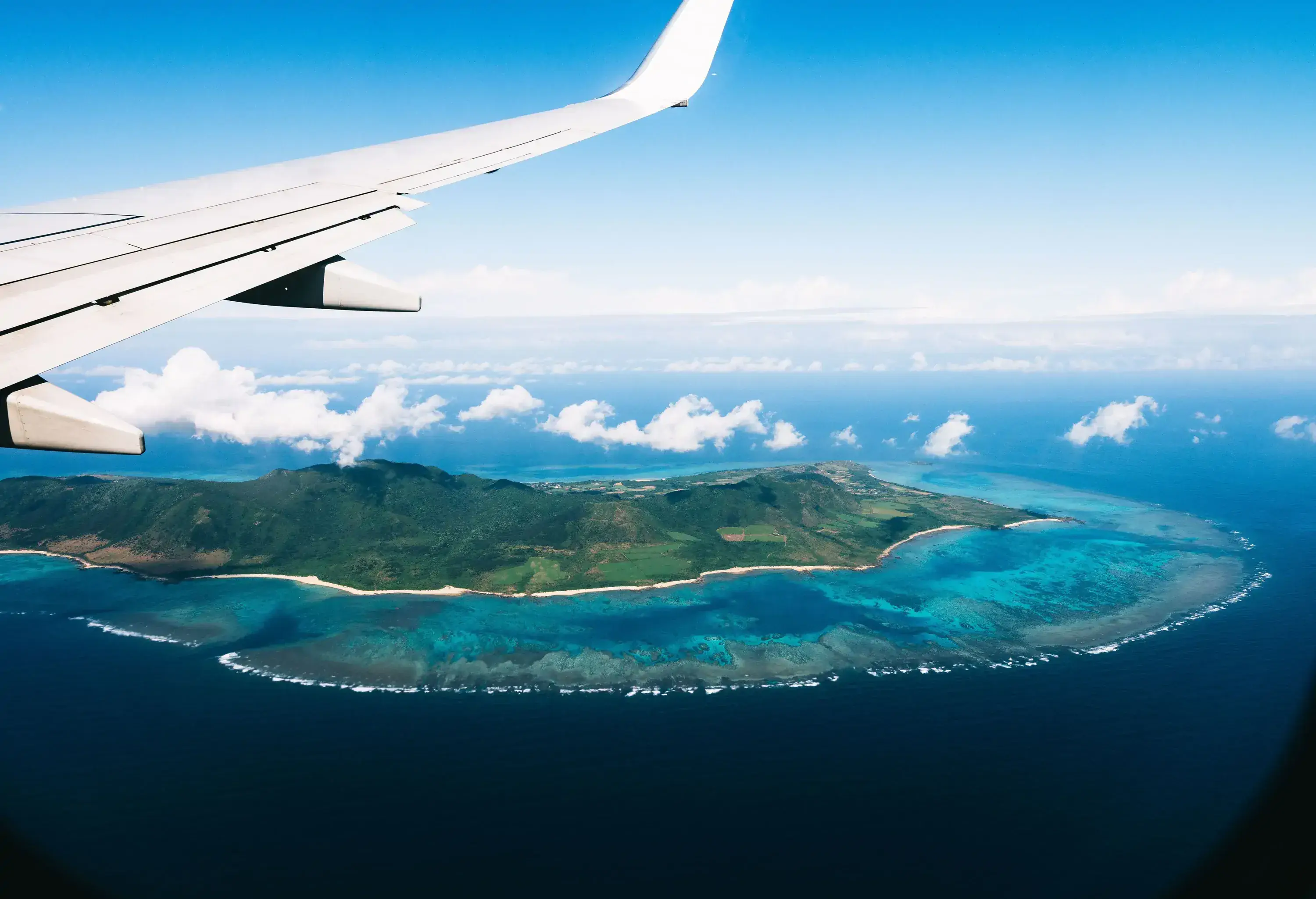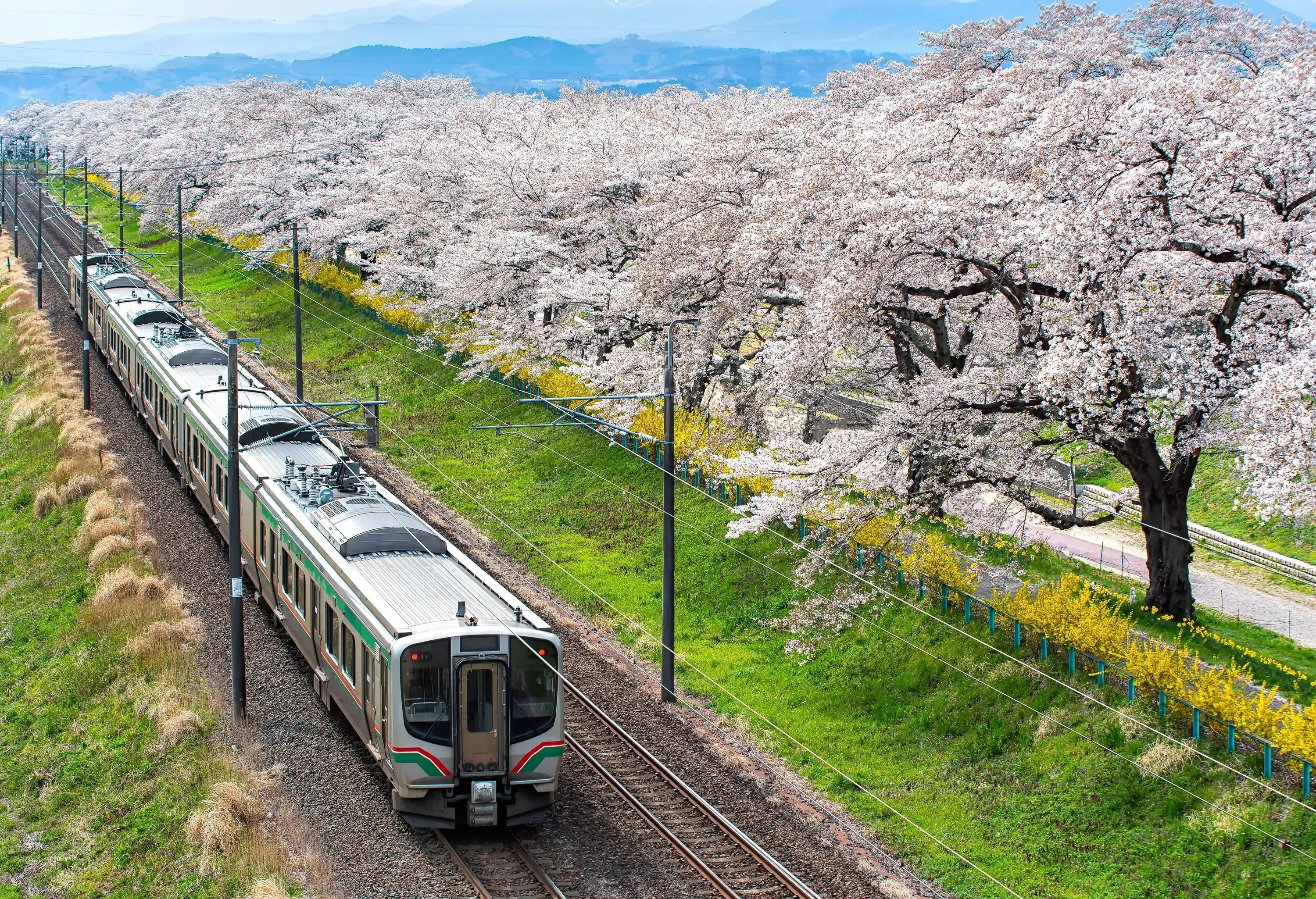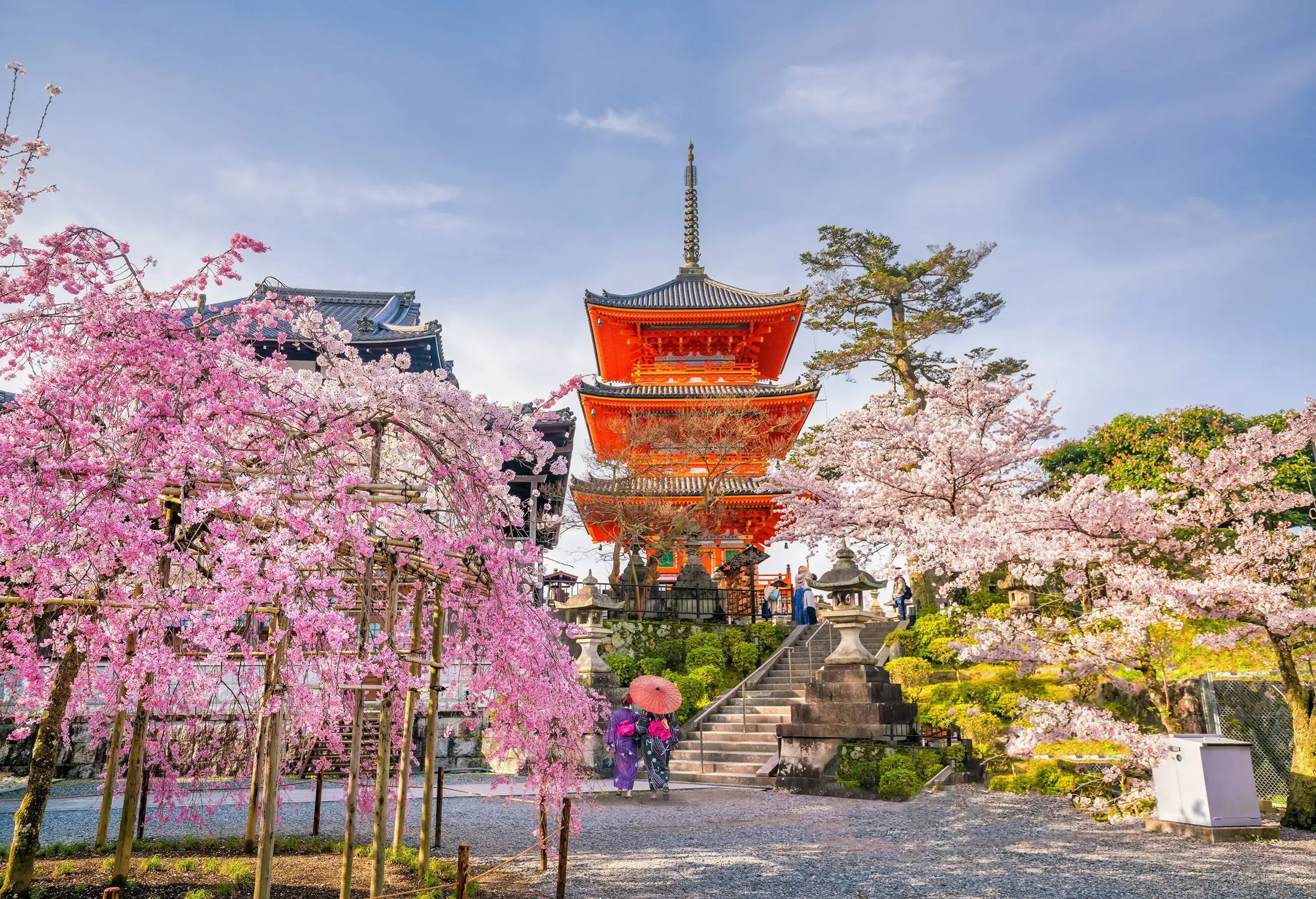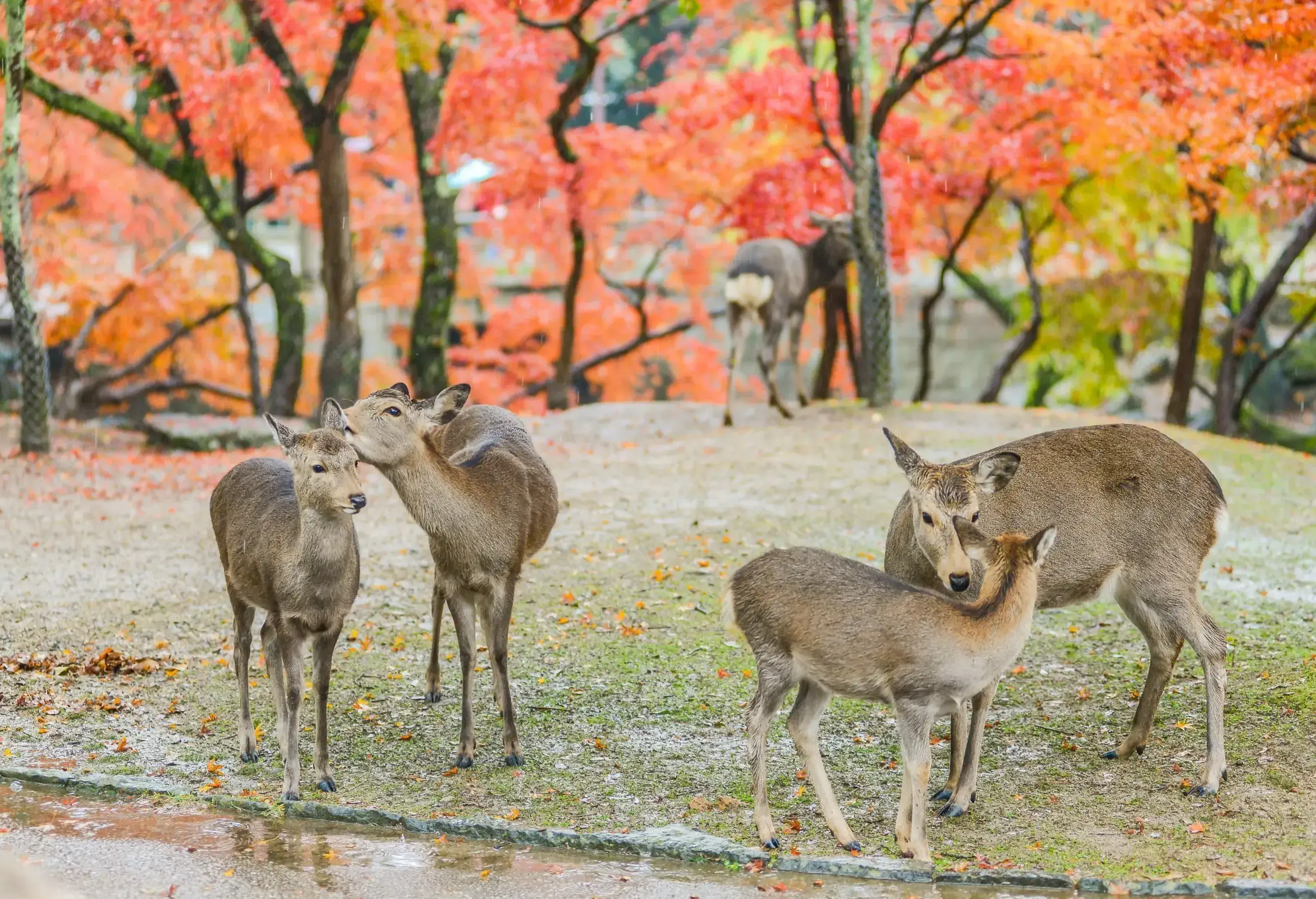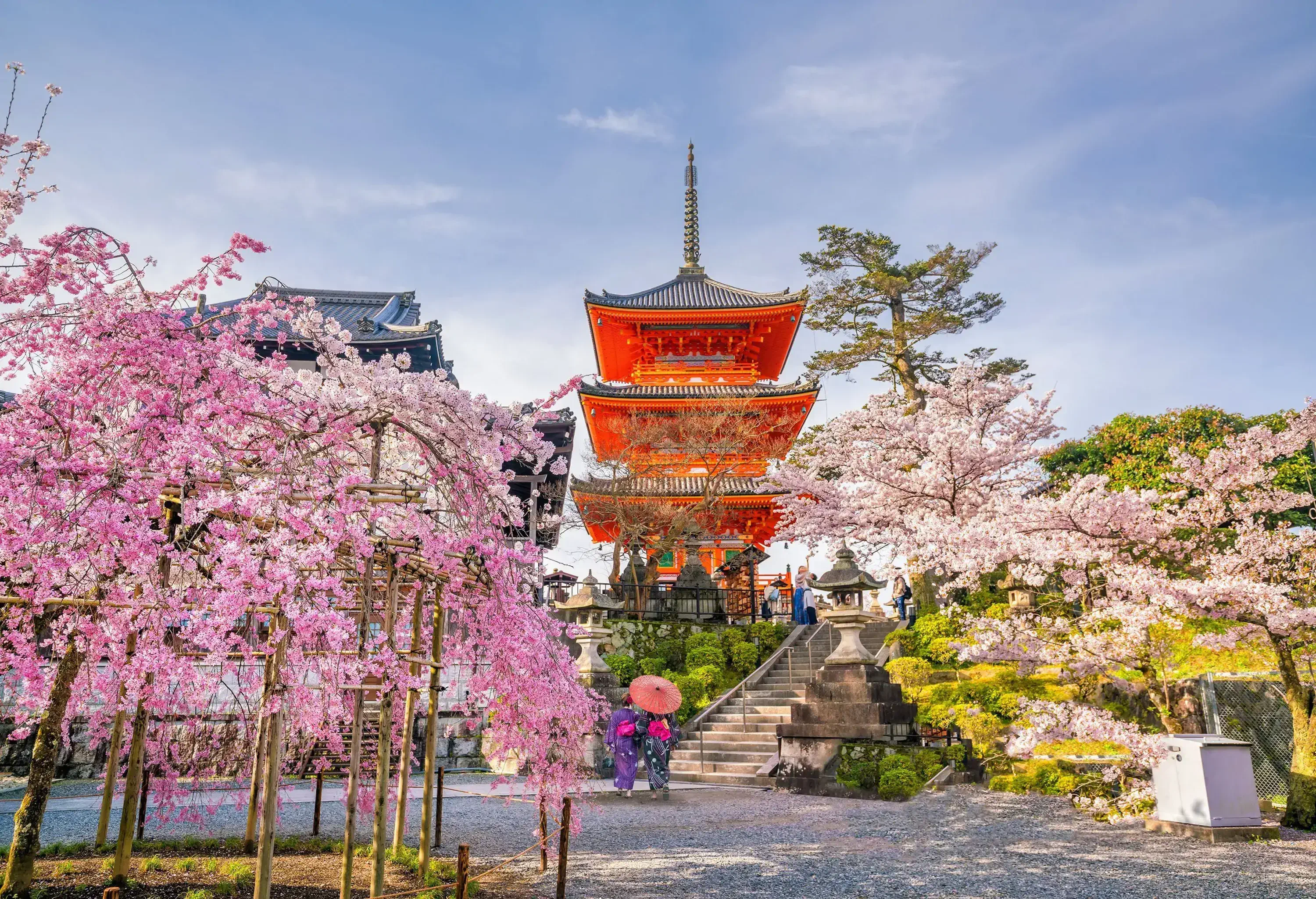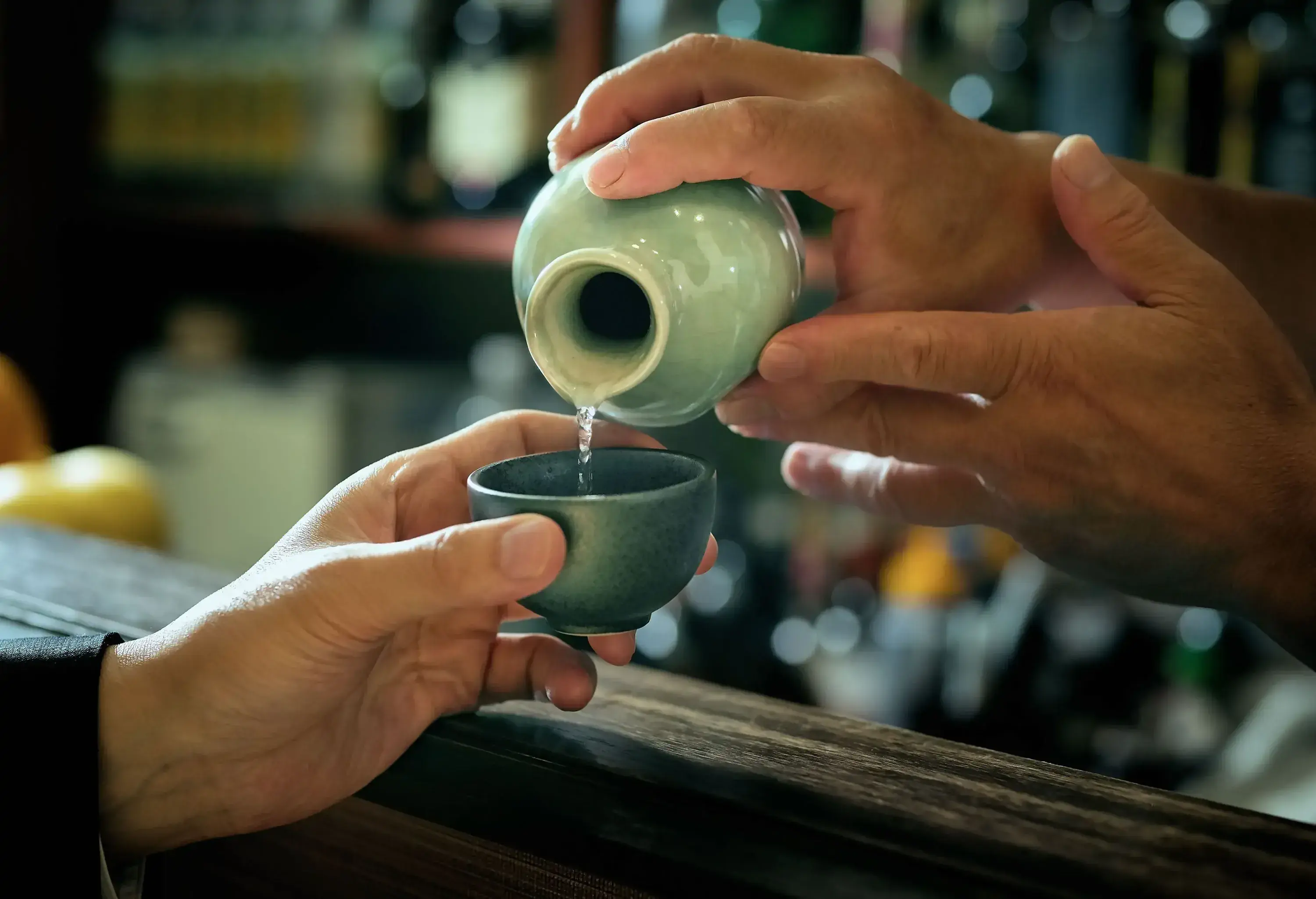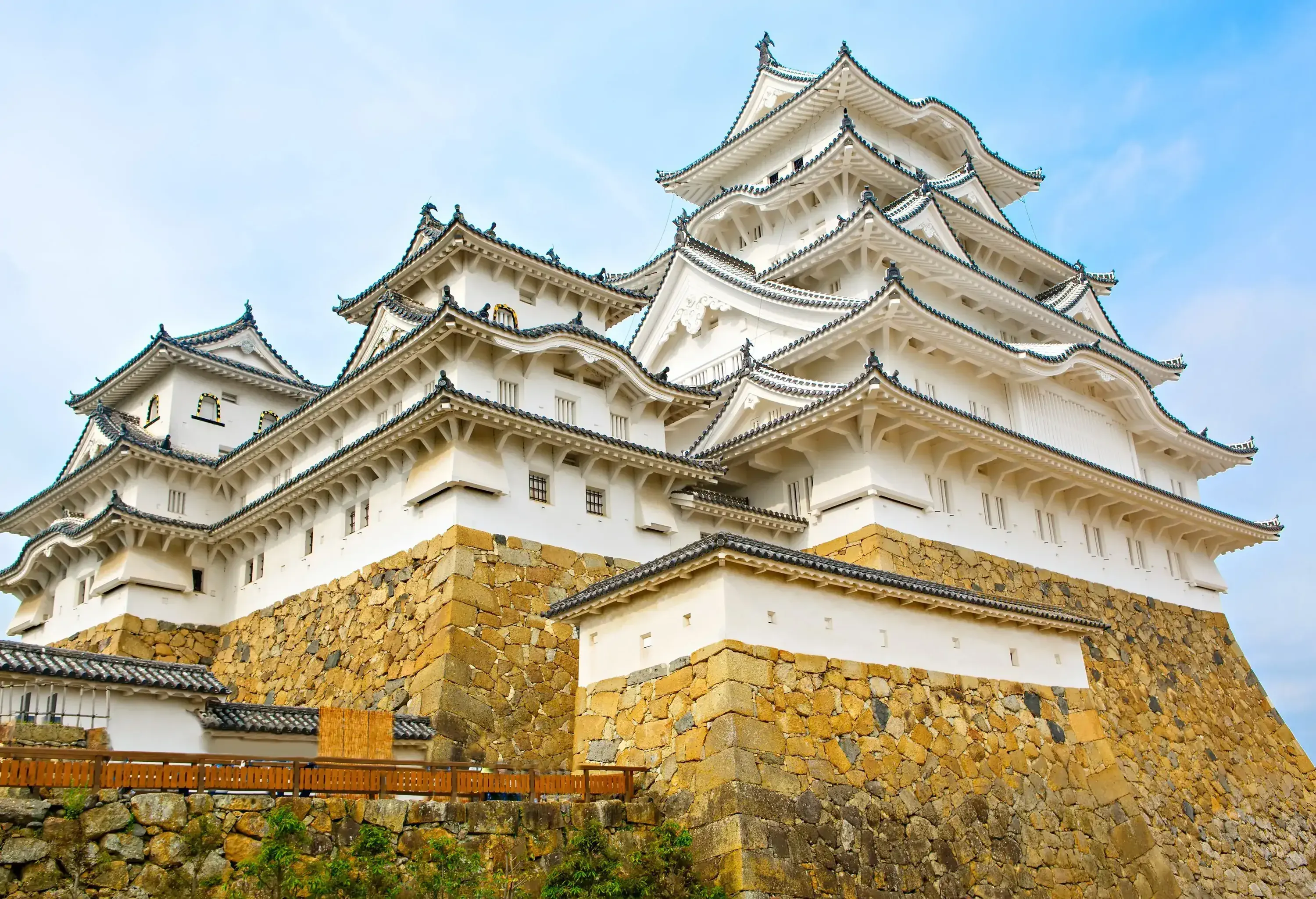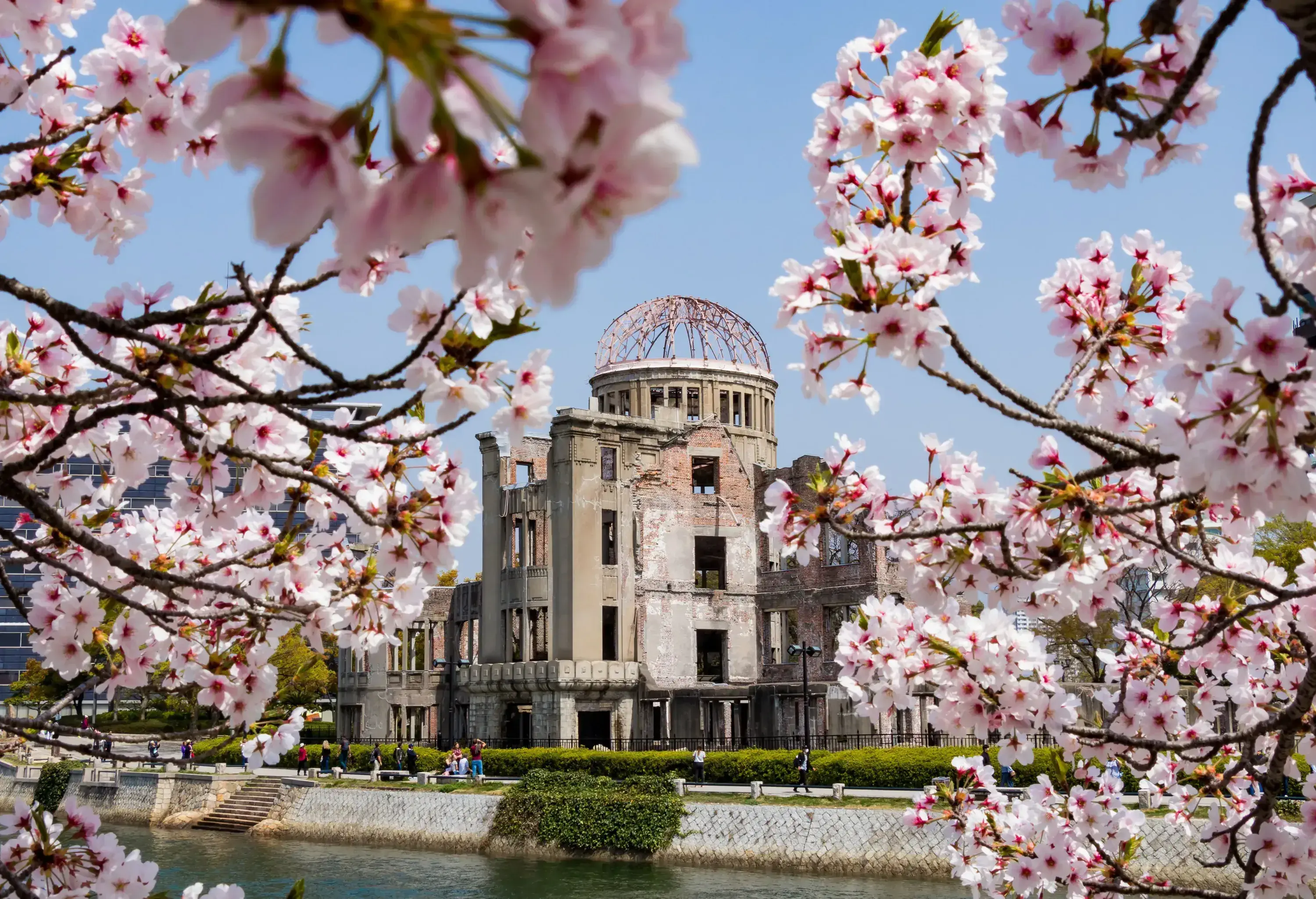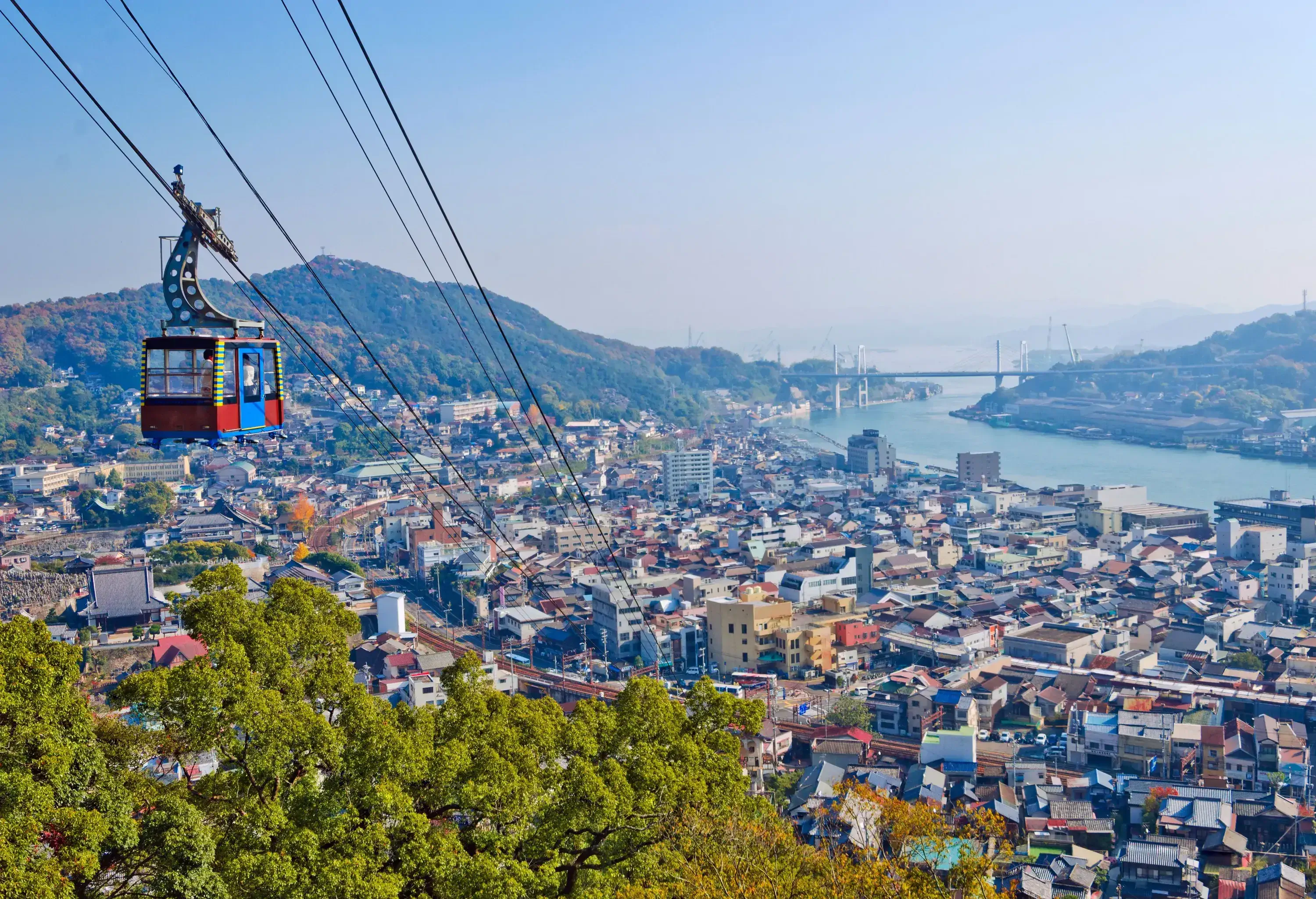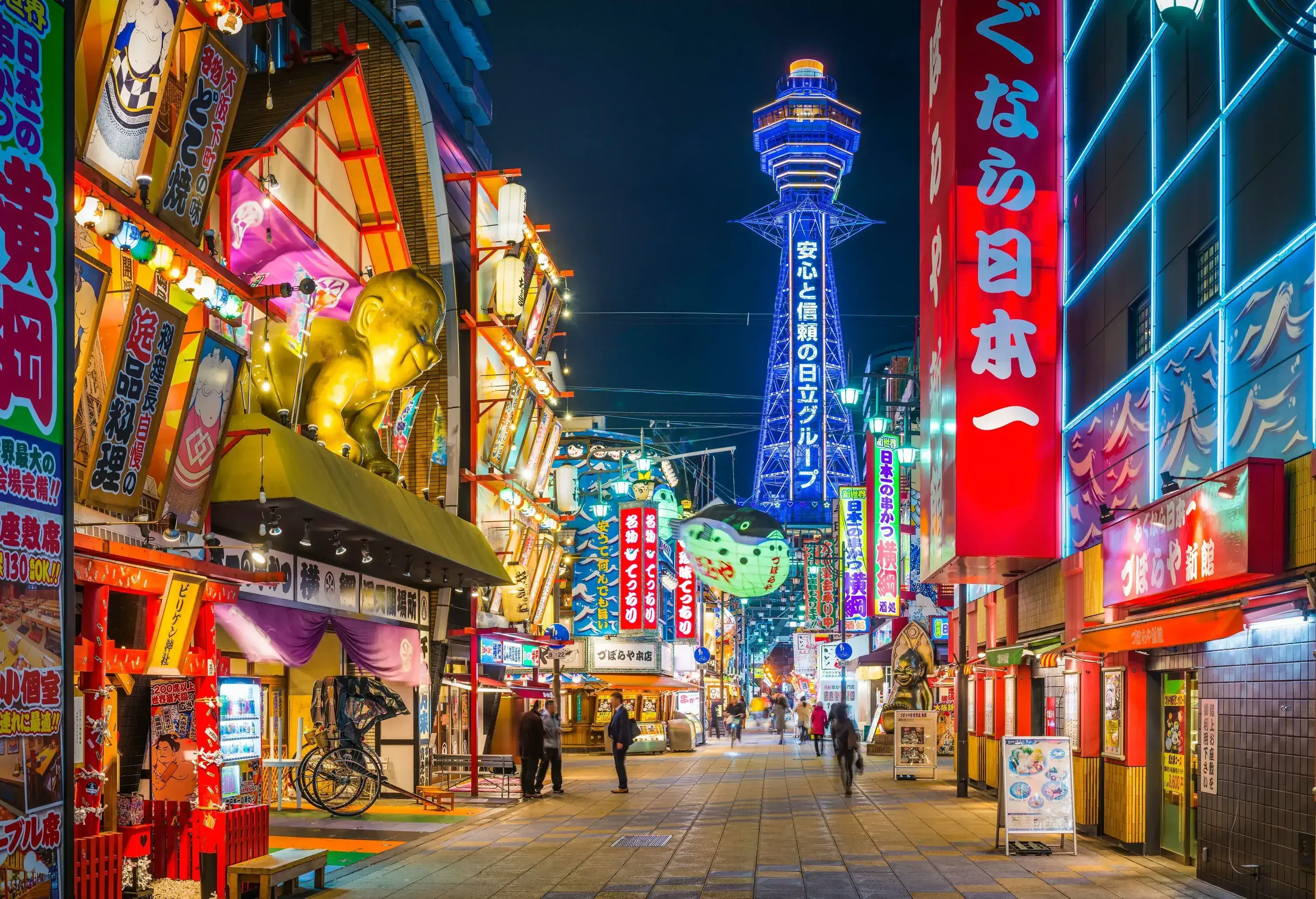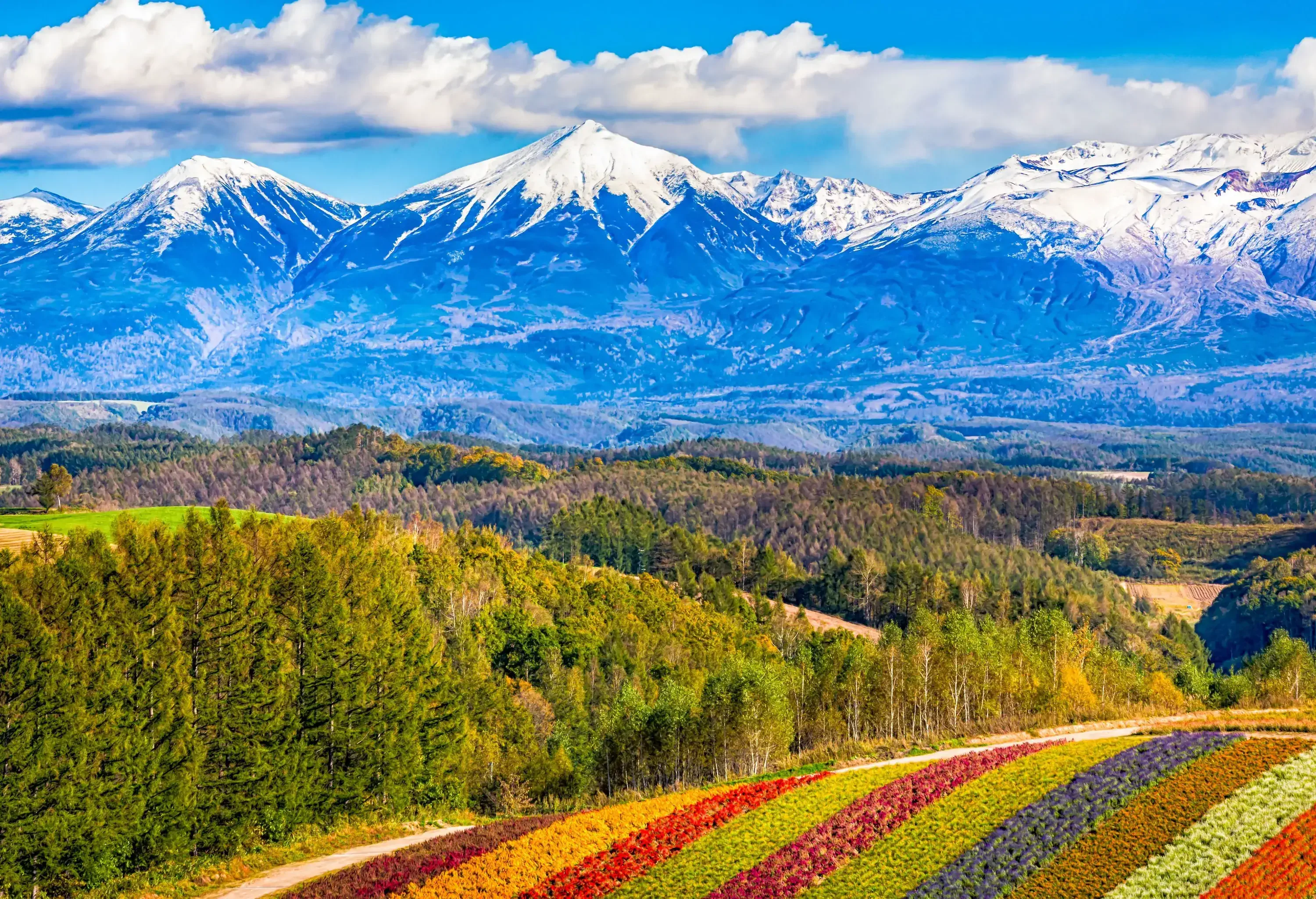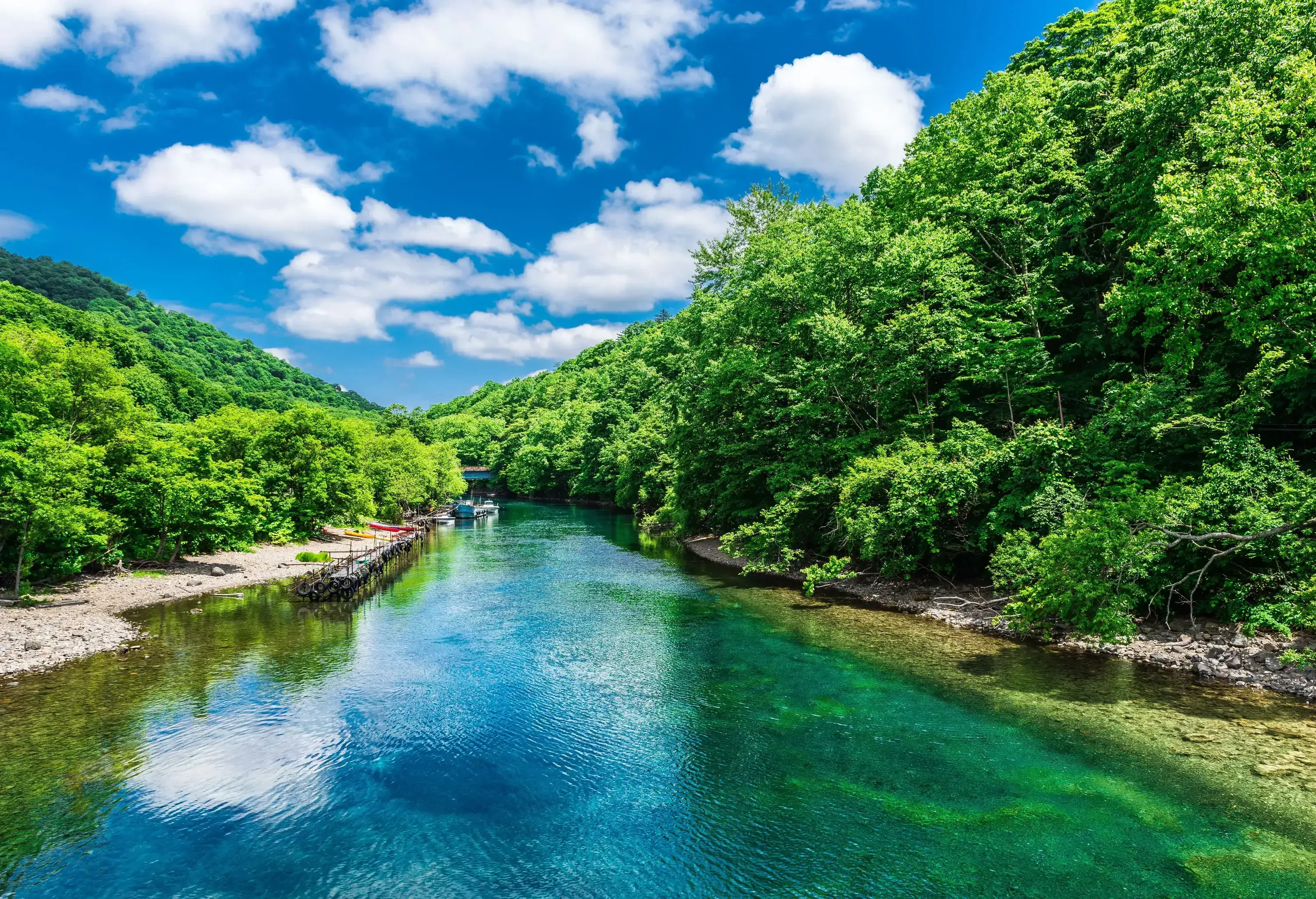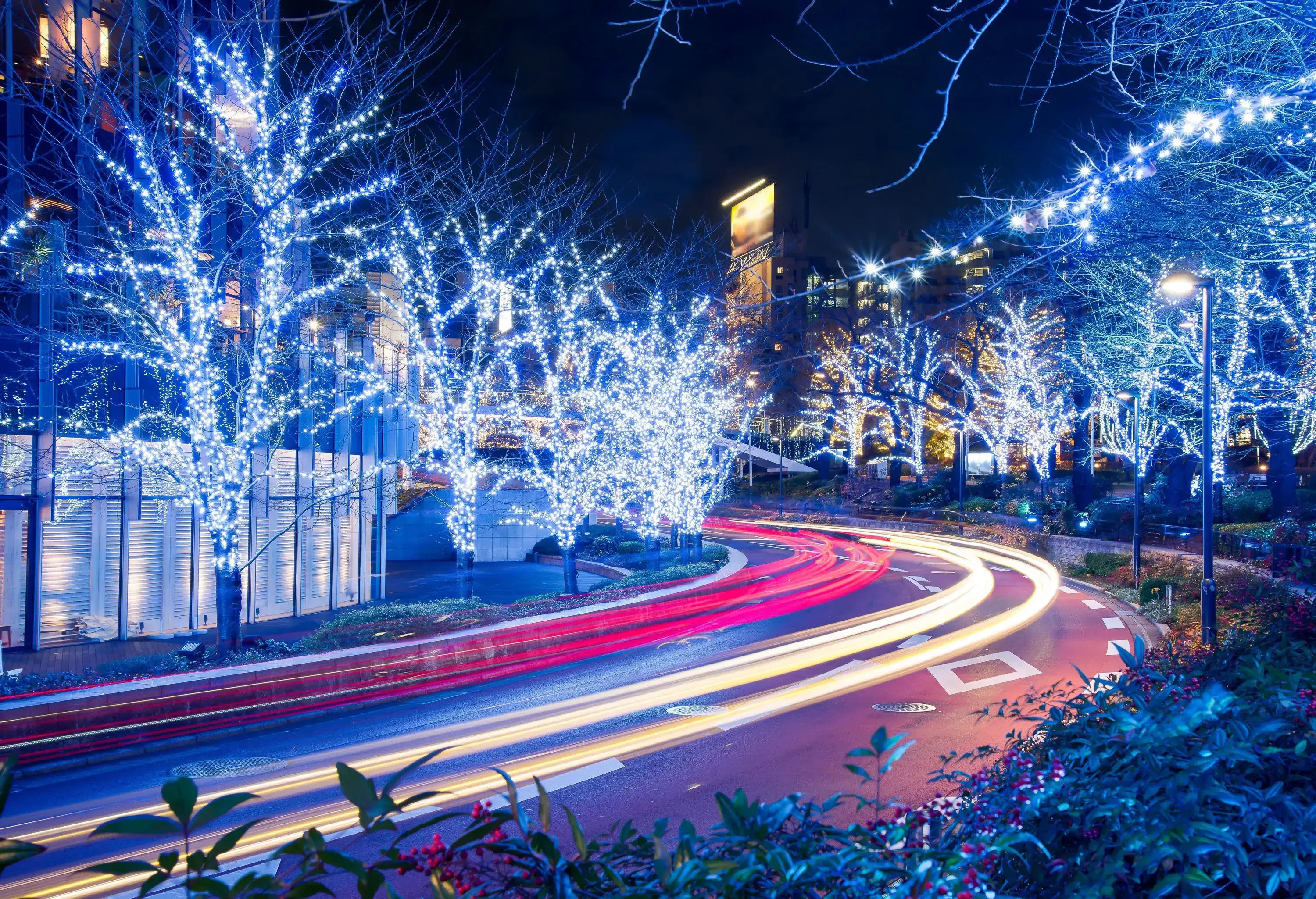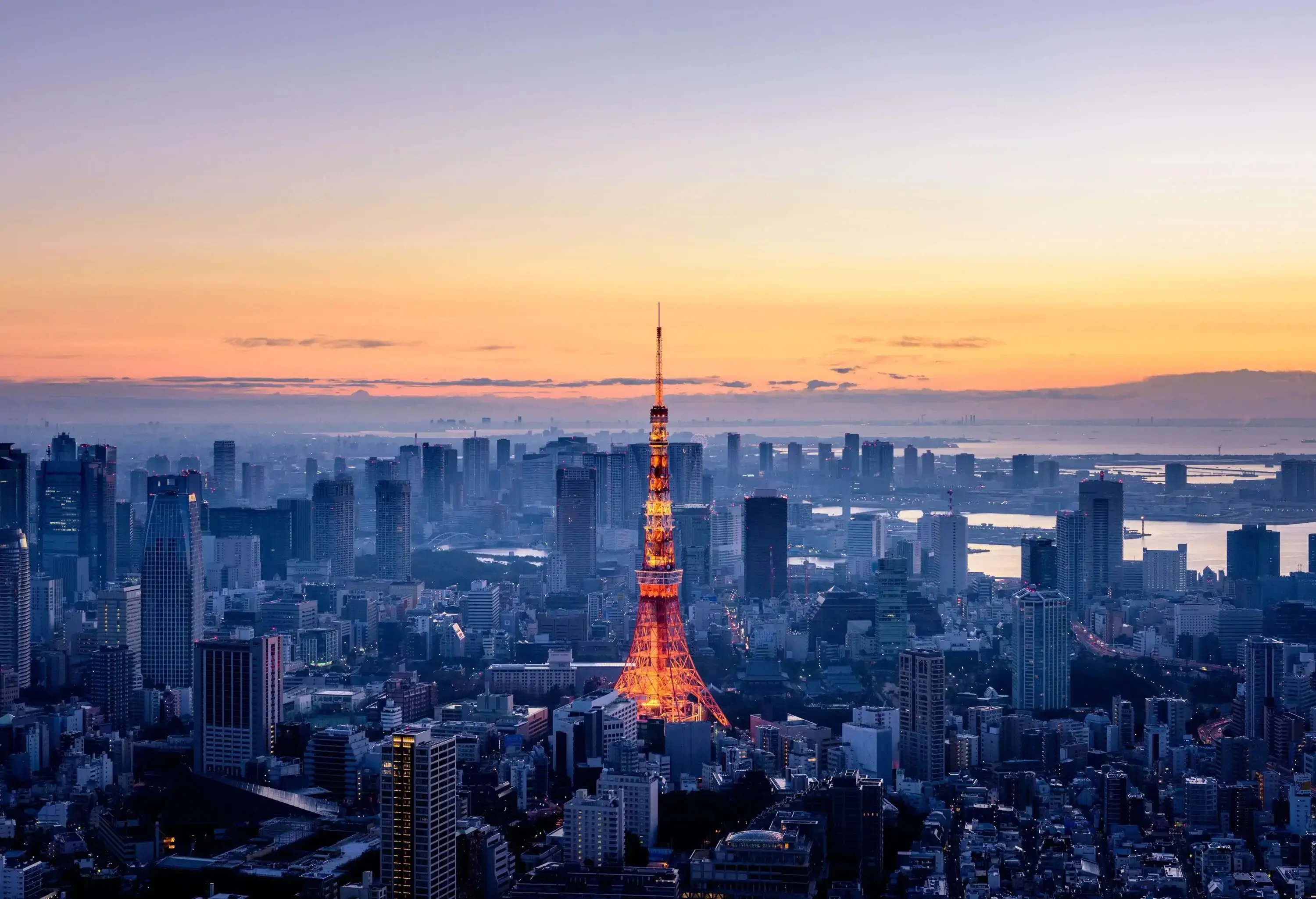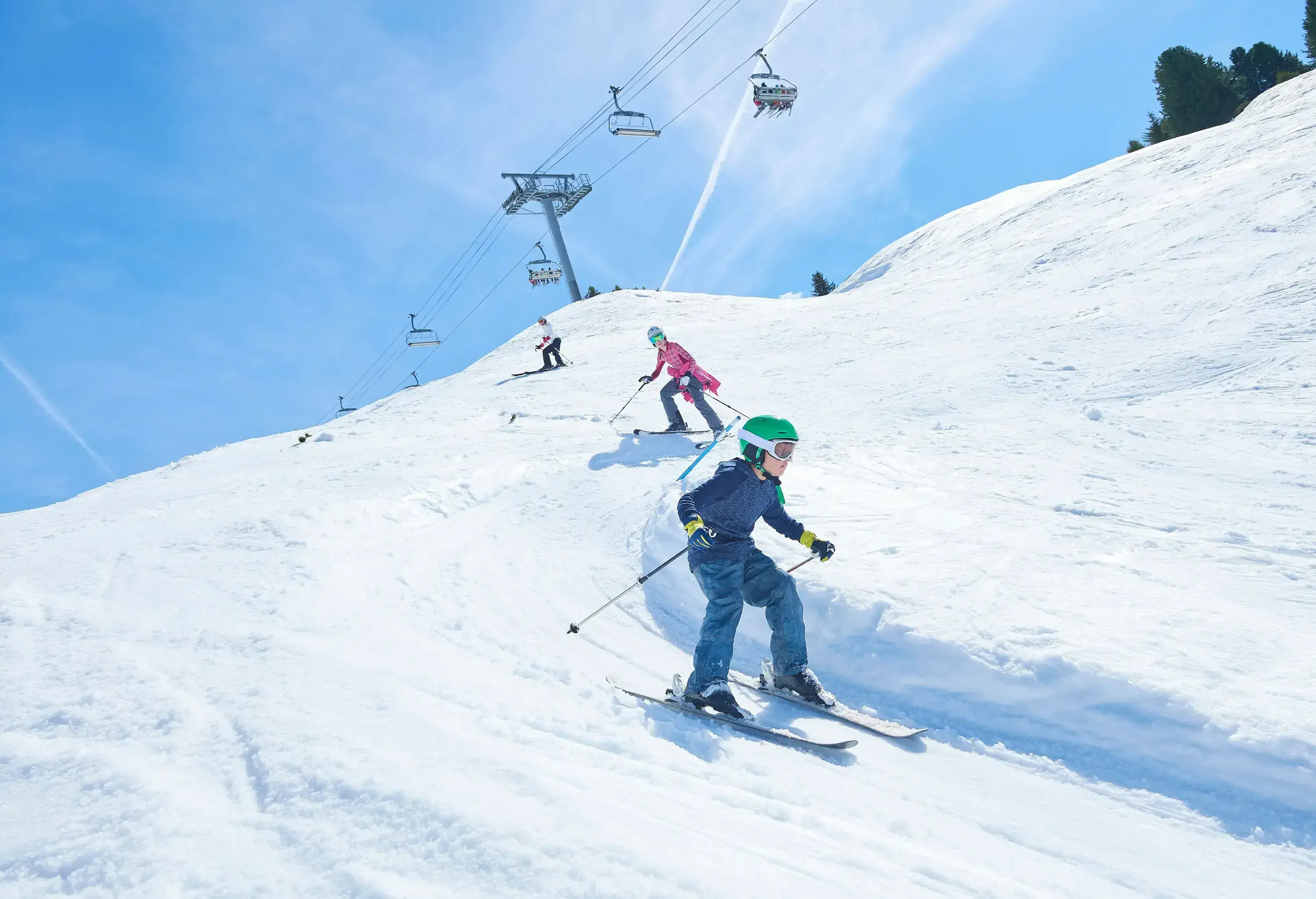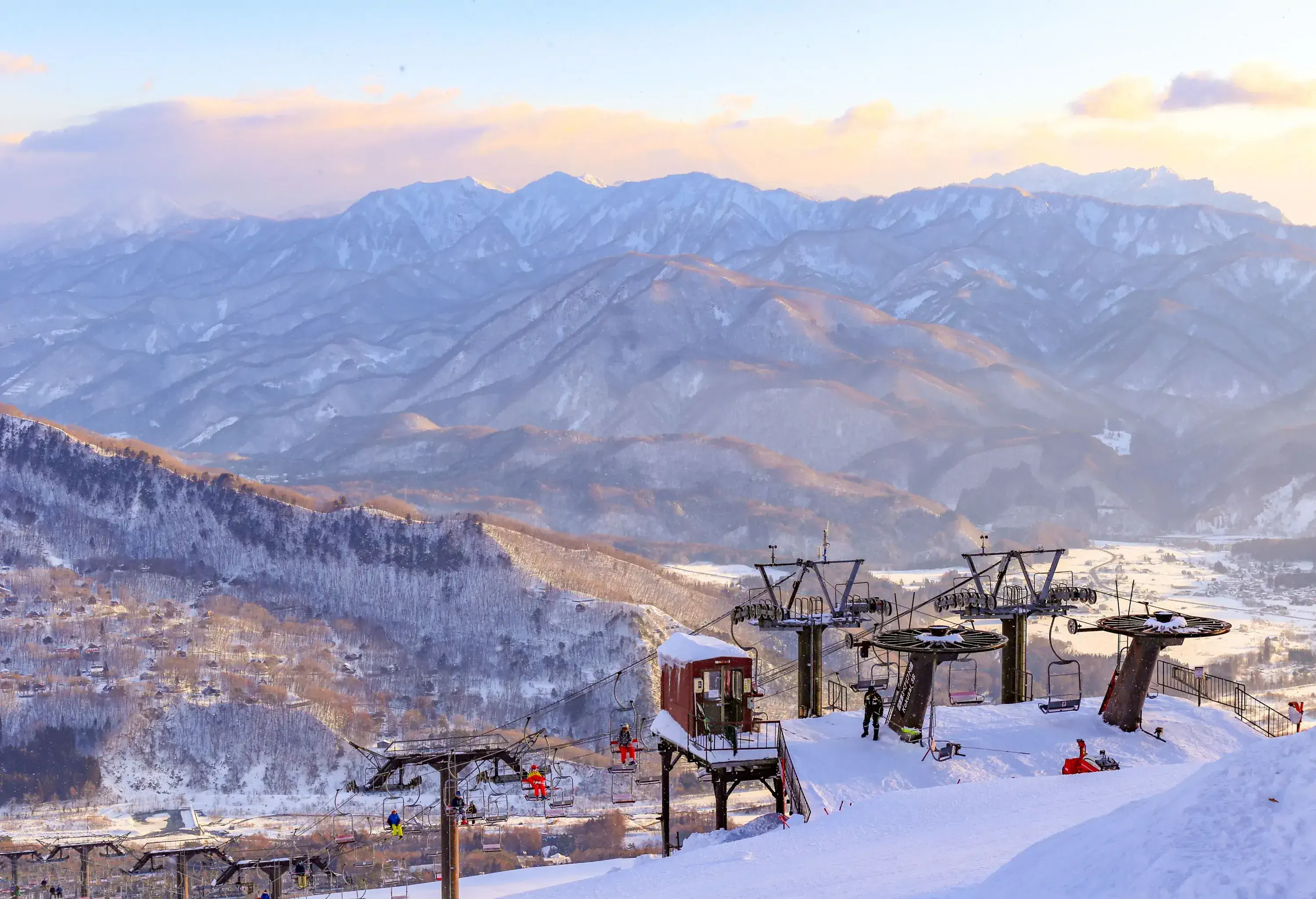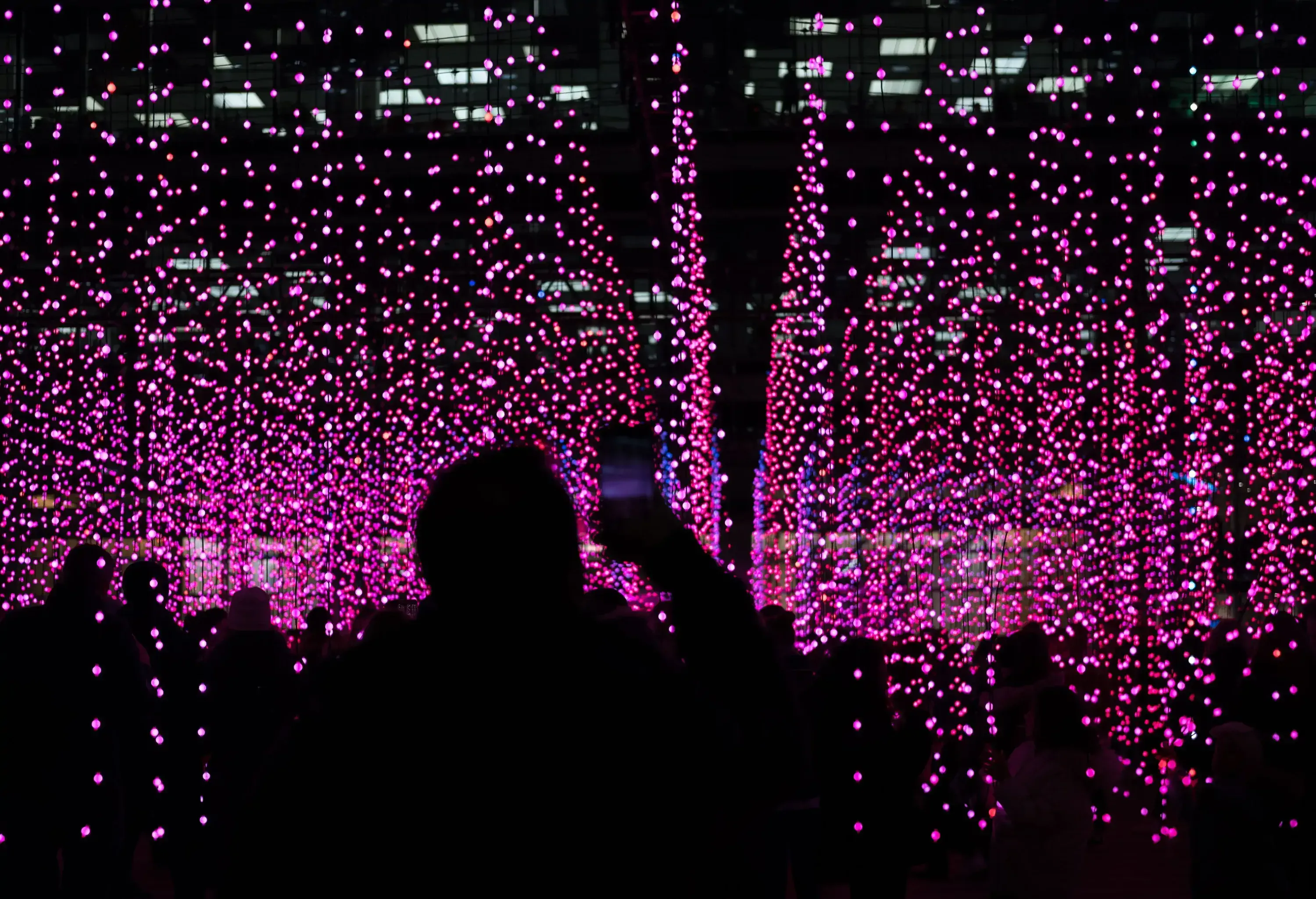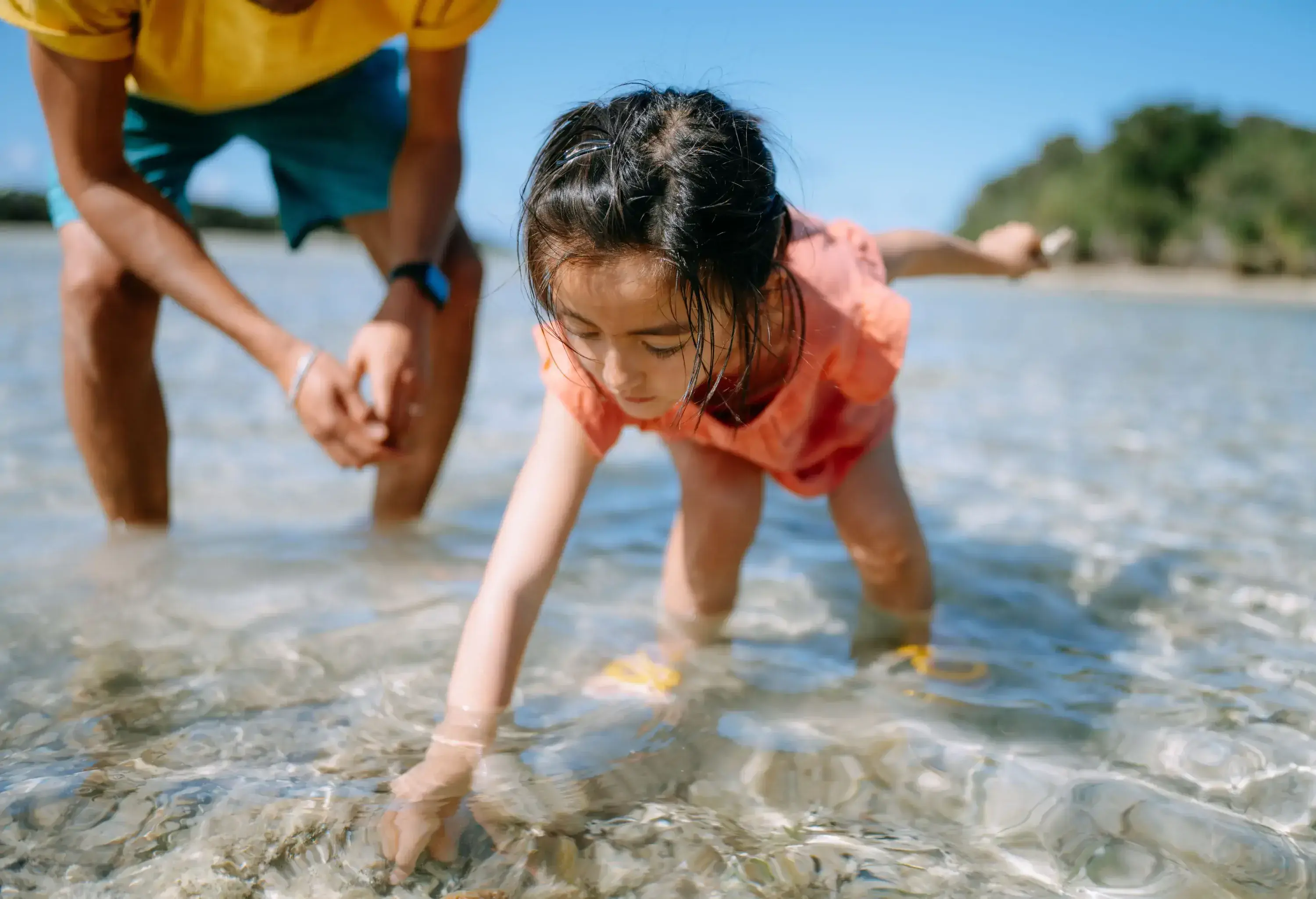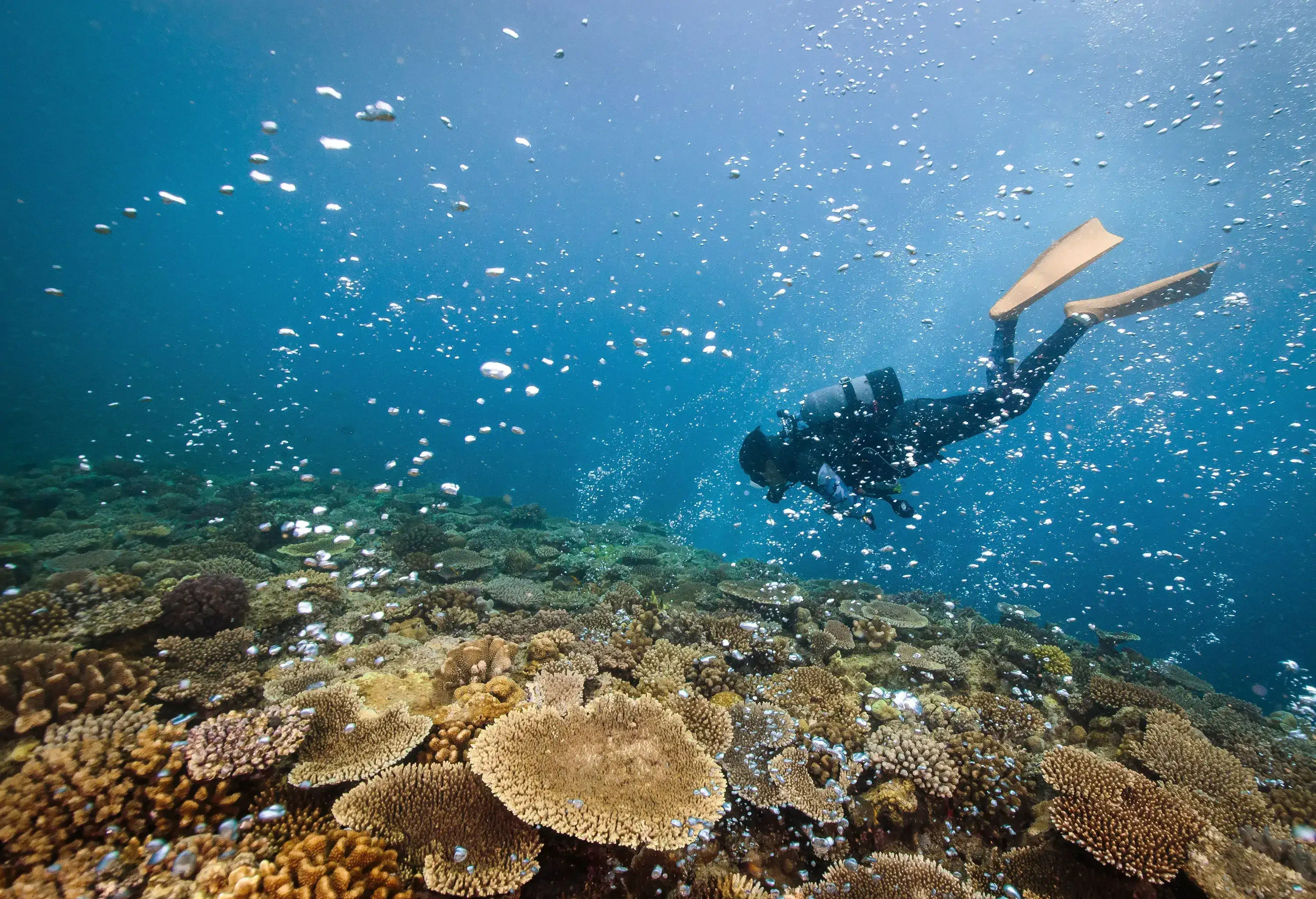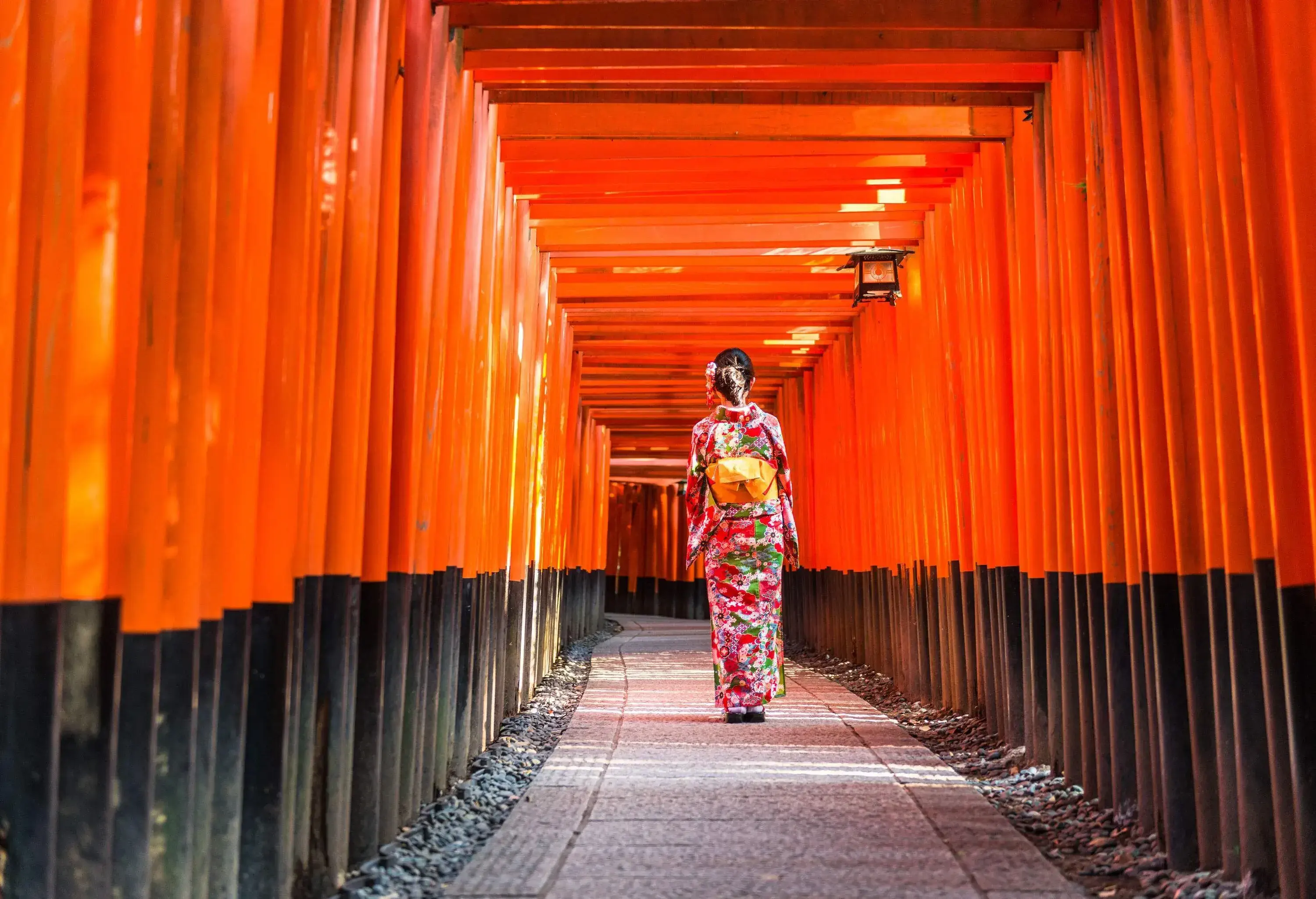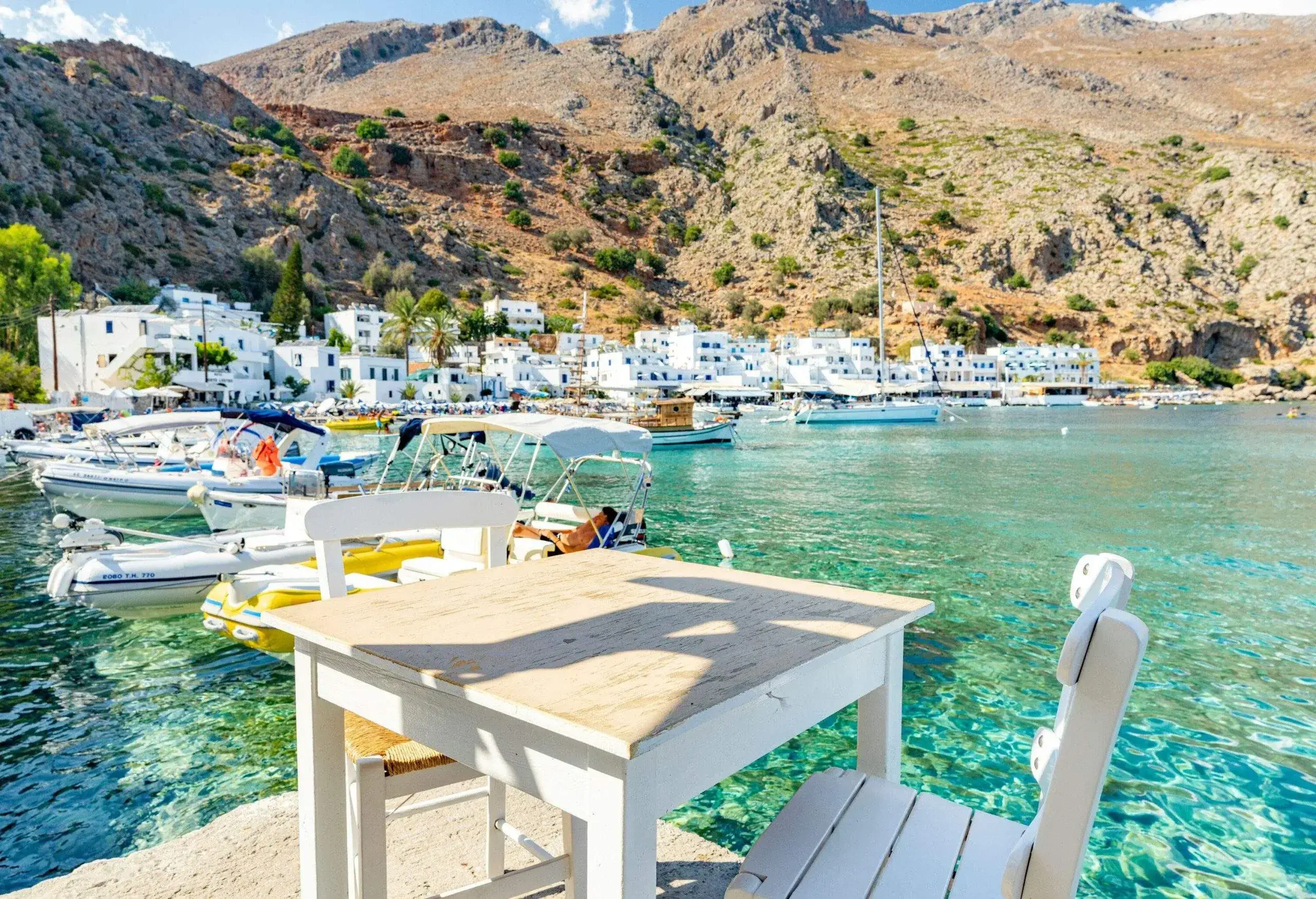Japan is one of the most fascinating countries I have ever visited, but planning my first trip felt overwhelming at times. To make it easy for you, I have put together a great Japan itinerary for 7, 10, and 14 days – as well as tips on how to find cheap flights and get around. This way, you can focus on what is most important: eating all the delicious Japanese food you can find!
Entry requirements for Japan.
Currently, British citizens do not need a visa for short-term trips up to 90 days, according to the Embassy of Japan in the UK website.
You do need to fill out an arrival card, though, to show when going through immigration and customs. However, these days you can quickly fill it out online at the Visit Japan Web website and get a QR code for your arrival in Japan.
How to get around in Japan.
While most big cities in Japan offer a great network of public transport with an underground system (metro), monorails, and buses, make sure to pack comfortable walking shoes as well. Getting 20,000 steps in a day is never easier than when travelling in Japan!
Wondering how you can you get from one city to the next in Japan? You have a few options:
Domestic flights in Japan
While everyone is raving about the trains, I personally love flying in Japan. Japanese carriers include the JAL Group and ANA Group, encompassing airlines like Spring Japan, Jetstar, and Peach.
Can you still get free domestic flights in Japan? Not quite, but the JAL Japan Explorer Pass gives international travellers great deals on domestic flights. And even if your domestic flight is not free, most connections are very affordable and sometimes cheaper than taking a bullet train.
Keep in mind that at most Japanese airports, you can only check in 90 minutes before departure when flying domestically. You can store your luggage, shop, eat, and do pretty much anything that you would usually do after checking in. Many airlines use self-service kiosks these days, but there are always staff around to help.
Trains
The Shinkansen, better known as the bullet train, is world-renowned for its speed and punctuality. There are various lines across the country as well as a variety of other train lines, most of which are operated by Japan Railways (JR).
While taking a bullet train is a quintessential Japan experience, the system is not always easy to navigate, nor necessarily the cheapest. Particularly for longer distances, it might be worth comparing train and flight prices – and before getting a JR Rail Pass, consider whether you will actually use it enough to get your money’s worth.
Ferries
Home to plenty of islands, it is no surprise that Japan also hosts an extensive ferry network. While the main islands of Honshu, Hokkaido, Kyushu, and Shikoku are well connected through bridges and tunnels, taking a ferry might be both a fun experience and unavoidable in some regions.
Car hire
Leaving the bigger cities, planning a road trip in Japan is a great way to see more of the country. Islands like Okinawa are also best explored by car, as public transport is limited.
However, you will need to get an International Driving Permit (IDP) to legally drive in Japan in addition to your regular valid UK licence. Helpfully, Japan drives on the left! Although likely familiar to those who have driven in Europe and elsewhere, be aware that distances are shown in kilometres and speed in kilometres per hour (km/h). You can find more tips on driving in Japan, as well as traffic laws, on the website of the Japanese Automobile Federation..
The best Japan itineraries for 7, 10, & 14 days
How many days should you plan for your Japan itinerary? I recommend making the most of the long trip and staying at least 10 days. Alternatively, you can spend a week in Tokyo alone or head to Okinawa for a beach getaway before flying to neighbouring Asian countries.
Japan itinerary 14 days – Honshu & Hokkaido.
To see some of the country’s highlights, I have put together this 2-week Japan itinerary. The trip focuses on the islands of Honshu and Hokkaido, so you can easily get around by train or plane.
Days 1–3: Tokyo
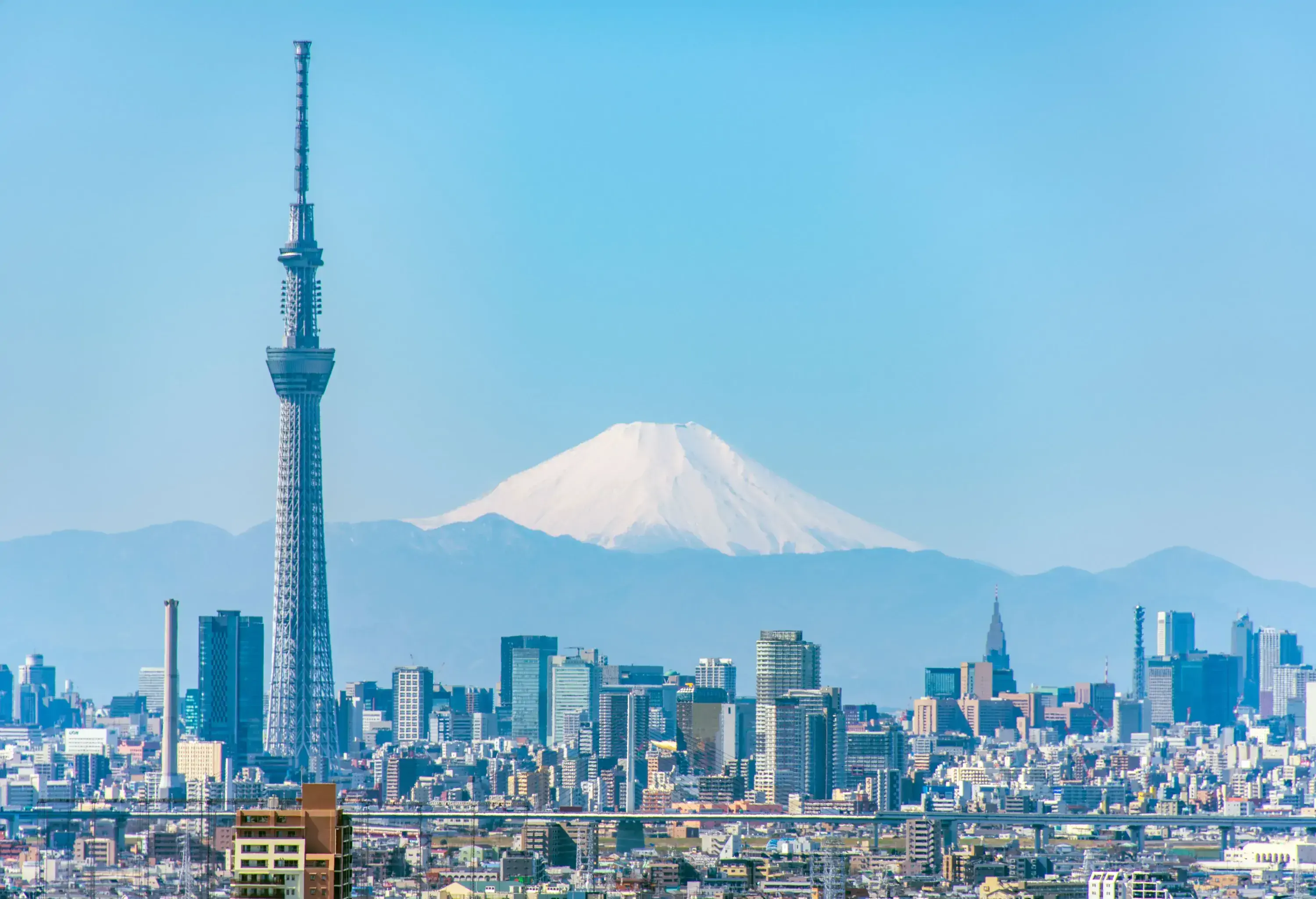
Japan’s capital, Tokyo, may just steal your heart like it stole mine. From historic to ultra-modern, from quiet to crazy – Tokyo has it all. Put on your walking shoes, load your Suica travel card, and start exploring. There is plenty to see and do – make sure to get tickets for all the sights you want to see well in advance. This includes Shibuya Sky, teamLabs, and the Ghibli Museum.
With a bit of luck, you might be able to spot mighty Mount Fuji from the top deck of Shibuya Sky. However, if you want to get closer, take a day trip to Hakone for the prettiest views.
How to get from Tokyo to Kyoto: since Kyoto doesn’t have an airport, your fastest way is to take the bullet train from Tokyo. Alternatively, you could book a flight from Tokyo to Osaka and take a train like the JR HARUKA directly from Kansai Airport to Kyoto Station.
Days 4–6: Kyoto
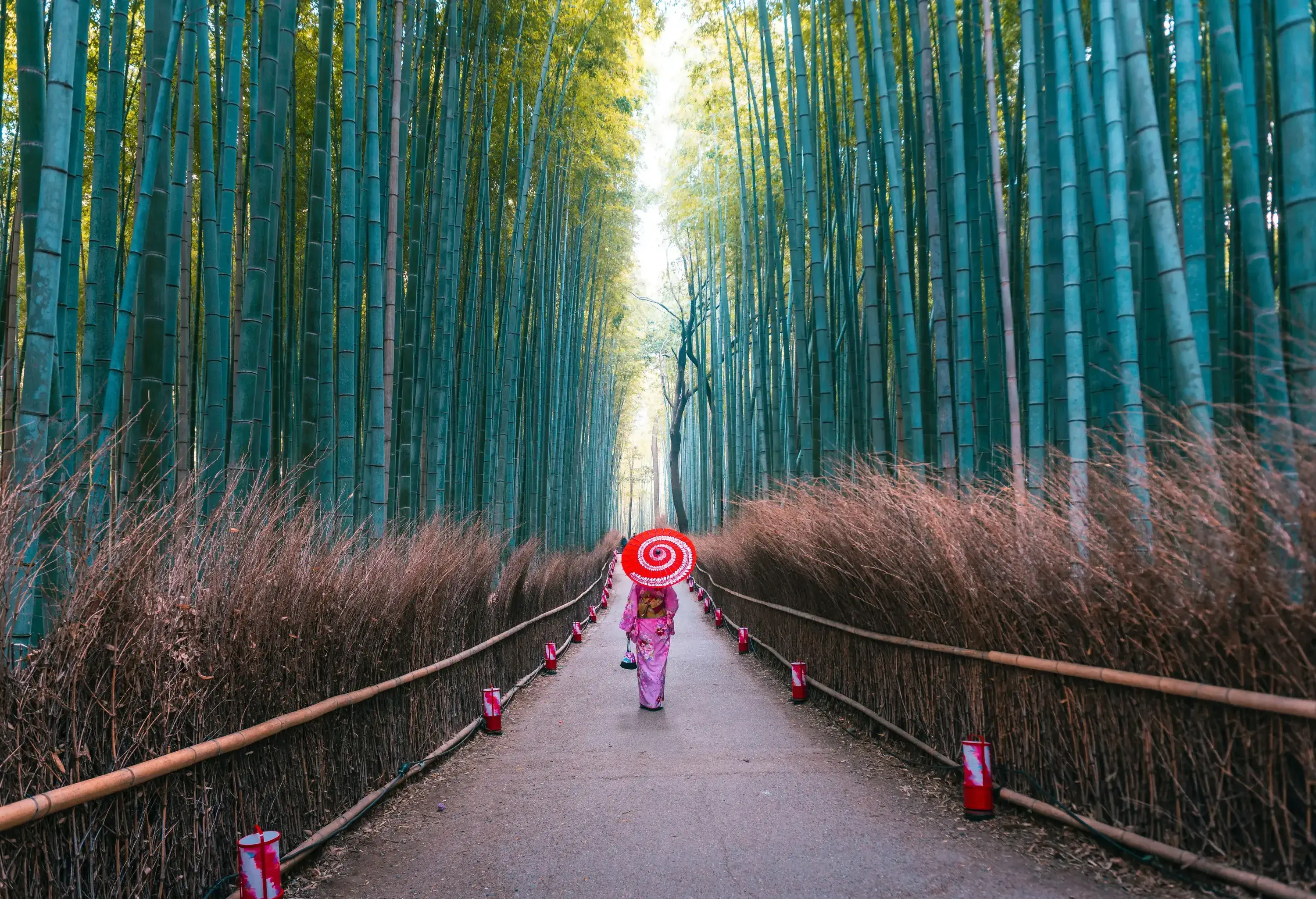
Kyoto is just so pretty that you will want to take a few days to explore. Its historic districts like Gion and Higashiyama are perfect for a leisurely stroll, although they can get crowded at times. For fun day trips, you should head to Uji, the matcha capital of Japan, and Nara to meet its famous deer.
While I usually wouldn’t recommend Starbucks in Japan, the location by the Yasaka Pagoda is probably the prettiest you will ever find.
How to get from Kyoto to Kobe: while Kobe has its own airport, the bullet train will take you from Kyoto to Kobe in half an hour.
Day 7: Kobe
While Kobe is mainly known for its beef, it is also home to some of Japan’s best sake breweries. If you prefer history over culinary adventures, take the one-hour trip to Himeji Castle, considered one of Japan’s most beautiful castles.
How to get from Kobe to Hiroshima: another quick bullet train will take you to Hiroshima.
Days 8 & 9: Hiroshima

If I had to pick my favourite city in Japan, it would be Hiroshima. Despite or because of its tragic history, the city today is vibrant and full of life. Plus, there is some amazing regional food to try – including oysters and Hiroshima’s own version of okonomiyaki, a savoury pancake.
Make sure you take the ferry to Miyajima Island to see the beautiful Itsukushima Shrine. There are also holy deer living on the island, and they may just pose for a picture with you.
How to get from Hiroshima to Osaka: while both cities have airports, there are no direct flights from Hiroshima to Osaka, so I recommend taking the train.
Days 10 & 11: Osaka
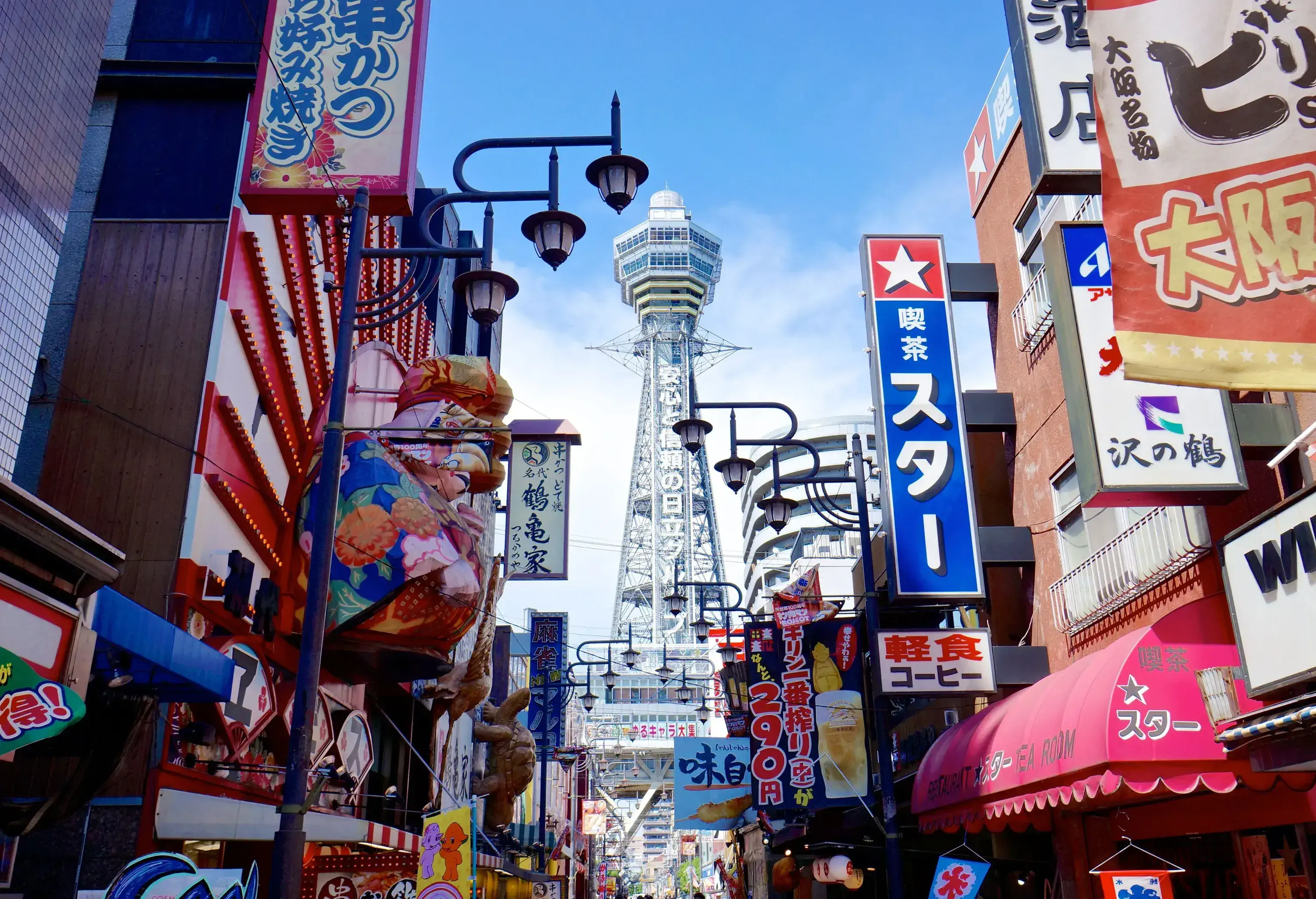
Come hungry when visiting Osaka! While you will find great food almost anywhere in Japan, Osaka is the cream of the crop. The motto: kuidaore – eat until you drop Head to Dotonbori and Shinsekai for some of Osaka’s famous takoyaki and okonomiyaki.
Be sure to have your camera ready to take pictures of the Tsutenkaku Tower, the Kani Doraku crab, and the Glico Running Man.
How to get from Osaka to Sapporo: Hokkaido is over 900 miles from Osaka. Luckily, domestic flights start at an average of £80 (return) according to our KAYAK data and take less than two hours.
Days 12–14: Hokkaido
Hokkaido is Japan’s northernmost main island and a paradise for nature lovers. There are so many national parks to explore with hot springs, flower fields, lakes, and volcanoes. Come during the summer months for birdwatching, hiking, boating, and feasting on specialities like scallops, sea urchin, and crab.
Japan itinerary 10 days – winter getaway.
If you are planning a winter holiday, this 10-day Japan itinerary will take you to some of the snowiest regions. Perfect for skiing, hot onsen baths, and eating all the ramen you can fit.
Days 1 & 2: Tokyo
Winter in Tokyo is a magical time. The whole city turns into a glittery winter wonderland with light displays and decorations. Why not do your Christmas shopping in style or head to a now Christmas-themed Tokyo Disneyland? And don’t worry about not seeing the Christmas markets this year, because Tokyo has them too!
How to get from Tokyo to Hokkaido: avoid snowy roads or a long train trip and simply jump on a Tokyo to Sapporo flight to get to Hokkaido’s capital.
Days 3–5: Hokkaido
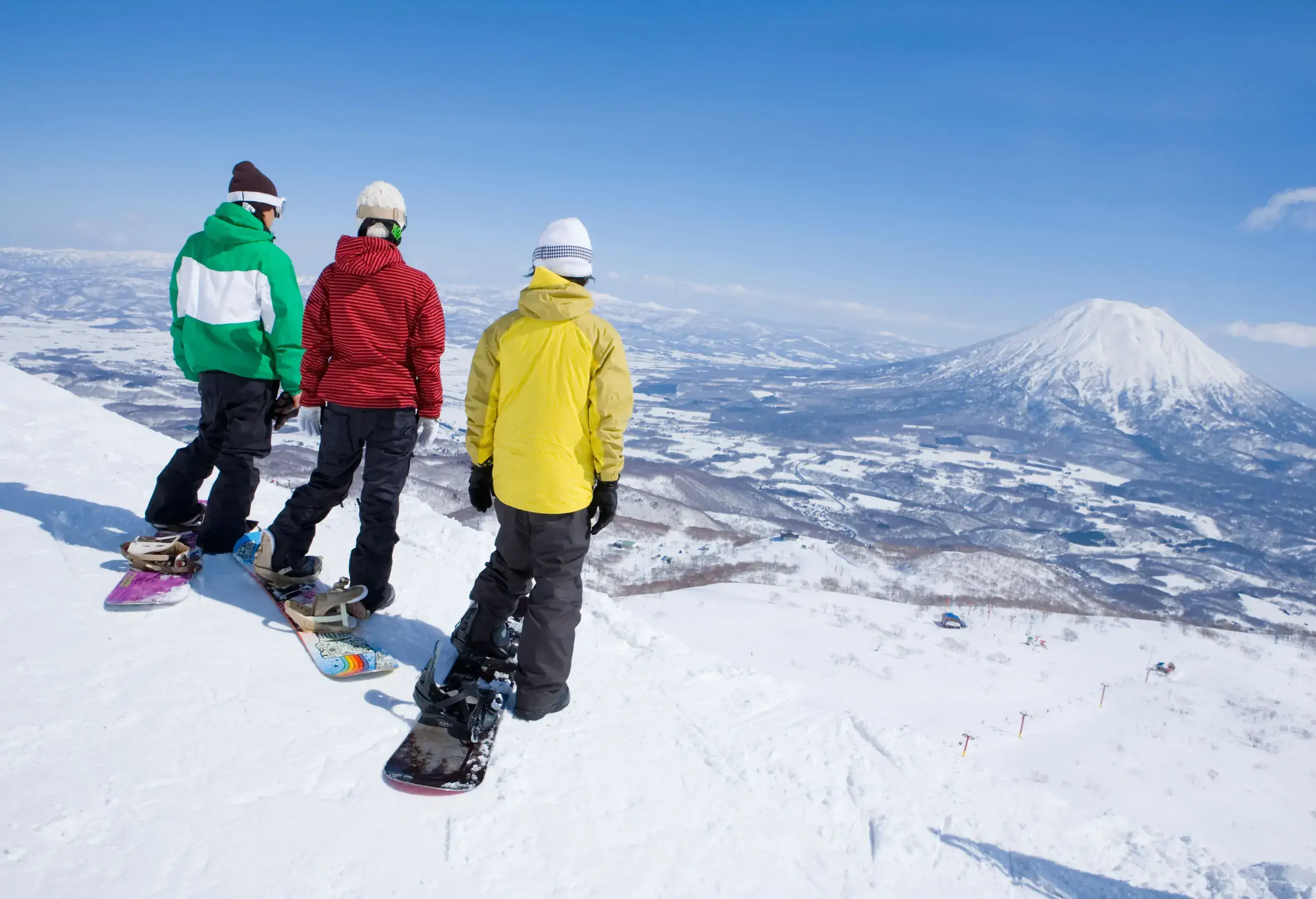
As Japan’s northernmost major island, Hokkaido sees a lot of snow and often freezing temperatures. Head to Niseko, Tomamu, or Rusutsu for fun in the snow, or Noboribetsu to warm up in the resort’s hot springs. In February, visit Sapporo for the annual Snow Festival.
How to get from Sapporo to Matsumoto: avoid long travel days if you are only planning a 10-day trip and catch a quick flight from Sapporo to Matsumoto.
Days 7 & 8: Matsumoto
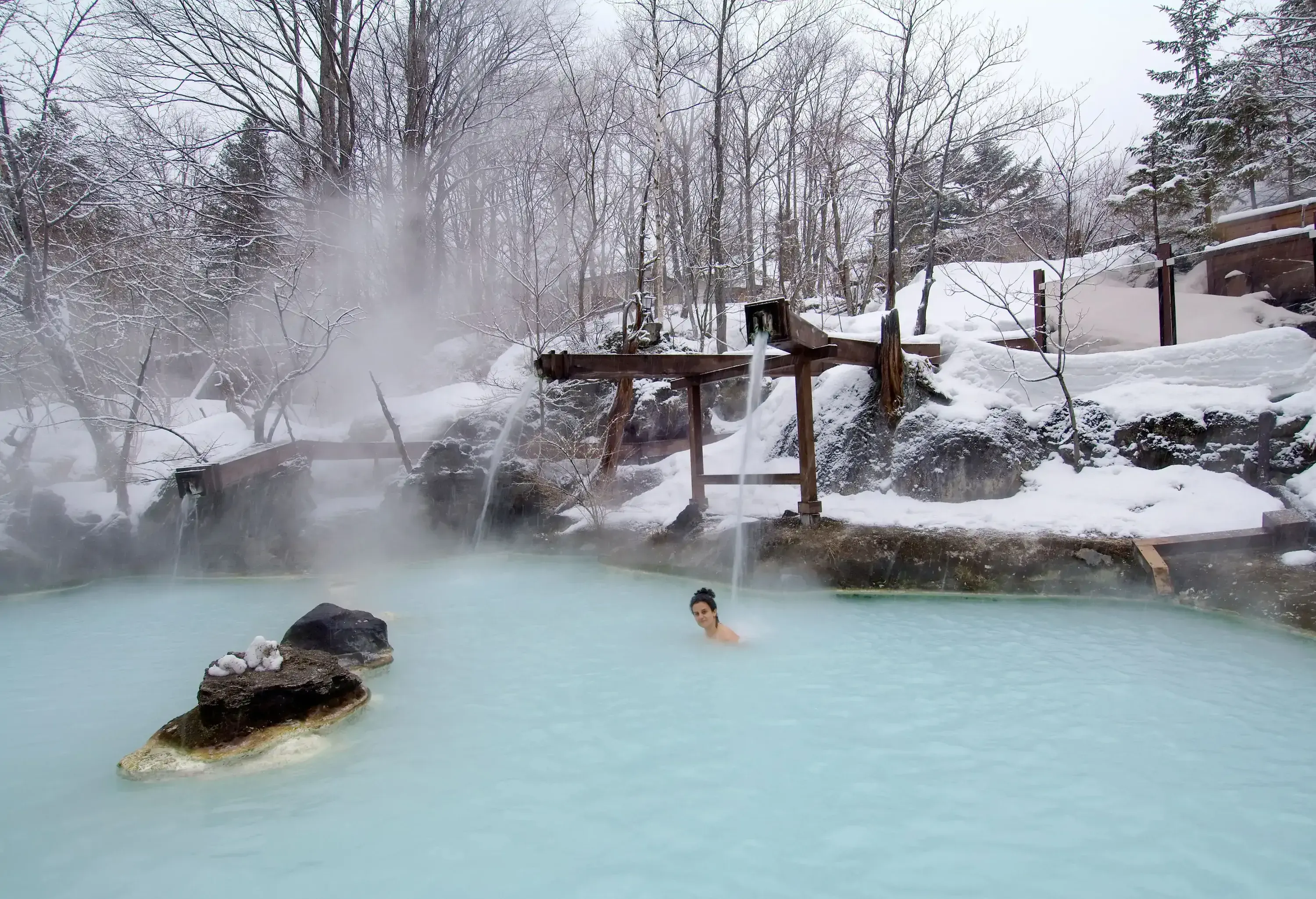
Matsumoto is a great starting point to explore the Northern Japanese Alps in Nagano. Skiers and snowboarders can follow the Alpine Route or head to Hakuba, often considered the country’s best ski resort. Of course, there are plenty of hot springs around for warming up after a day in the snow.
How to get from Matsumoto to Shibu Onsen: the easiest way is to hire a car in Matsumoto and drive. Alternatively, you can take an express train from Matsumoto to Nagano and then catch a local train to Yudanaka Station, the closest to Shibu Onsen.
Days 9 & 10: Shibu Onsen
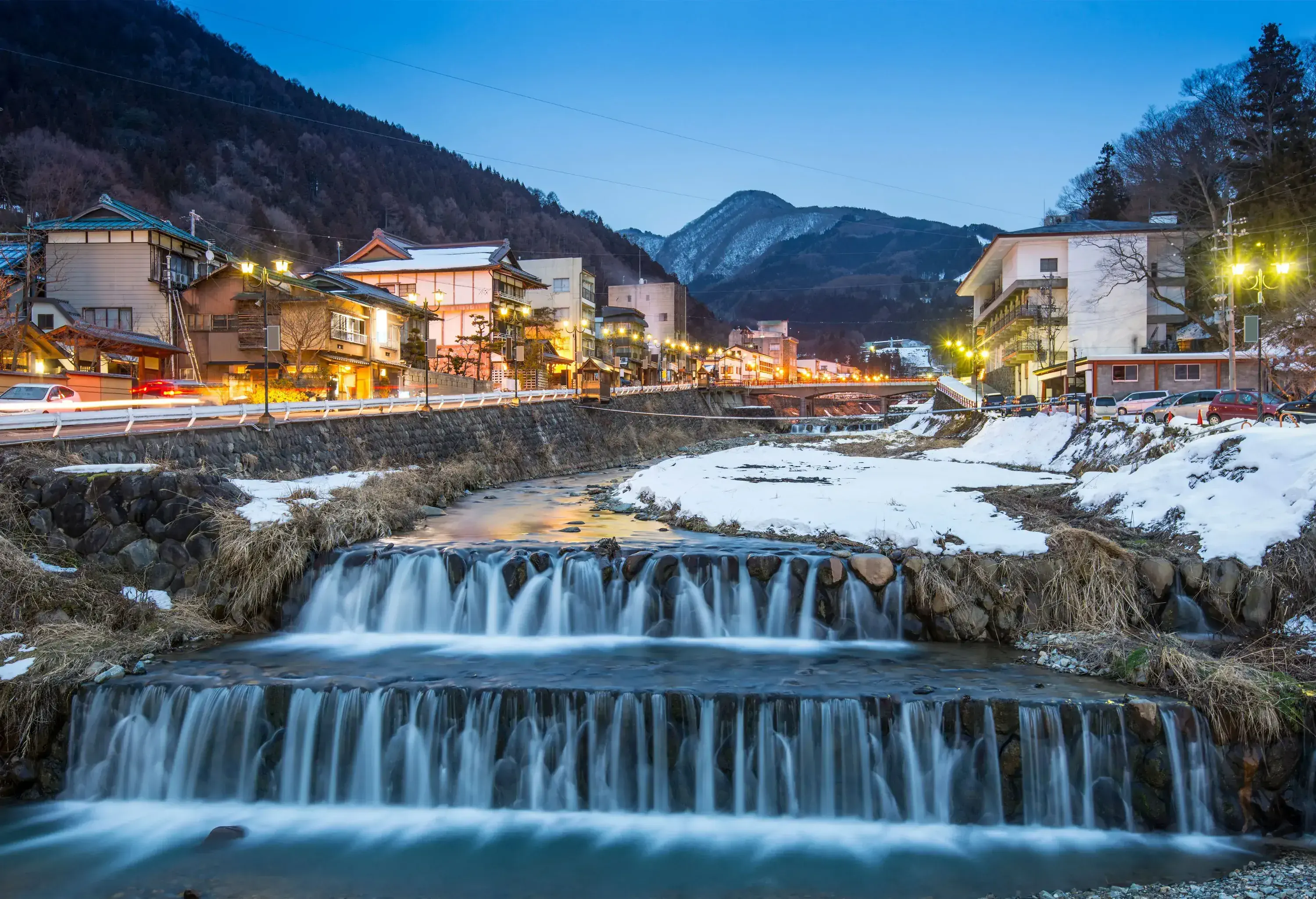
Shibu Onsen is one of the most beautiful towns in Nagano and known for its nine public onsen. You will often see guests wearing traditional yukata robes on their way from one bath to the next. Bathing in all nine is considered good luck.
Not to miss: a visit to the Jigokudani Monkey Park. Here you can watch wild macaque monkeys taking a bath in the open-air hot springs.
Japan itinerary 7 days – tropical getaway.
Summer in Japan means scorching temperatures, lots of rain, and sometimes typhoons. If you are willing to risk it, there will be a tropical paradise waiting for you in Okinawa, one of Japan’s southernmost islands.
Day 1: Tokyo
Some like it hot, but in Tokyo you may want to take refuge indoors. Head to Donki (the nickname of the megastore Don Quijote) and buy yourself a neck cooler for relief from the heat – make sure to plan activities with air conditioning. I recommend teamLabs Planets, an interactive art exhibition with locations around the world. This one even allows you to get your feet wet – a great way to cool off.
How to get from Tokyo to Fukuoka: the fastest way is to book a domestic flight to Fukuoka. If you prefer to have more time for island life, you can also get a direct flight from Tokyo to Okinawa.
Days 2 & 3: Fukuoka
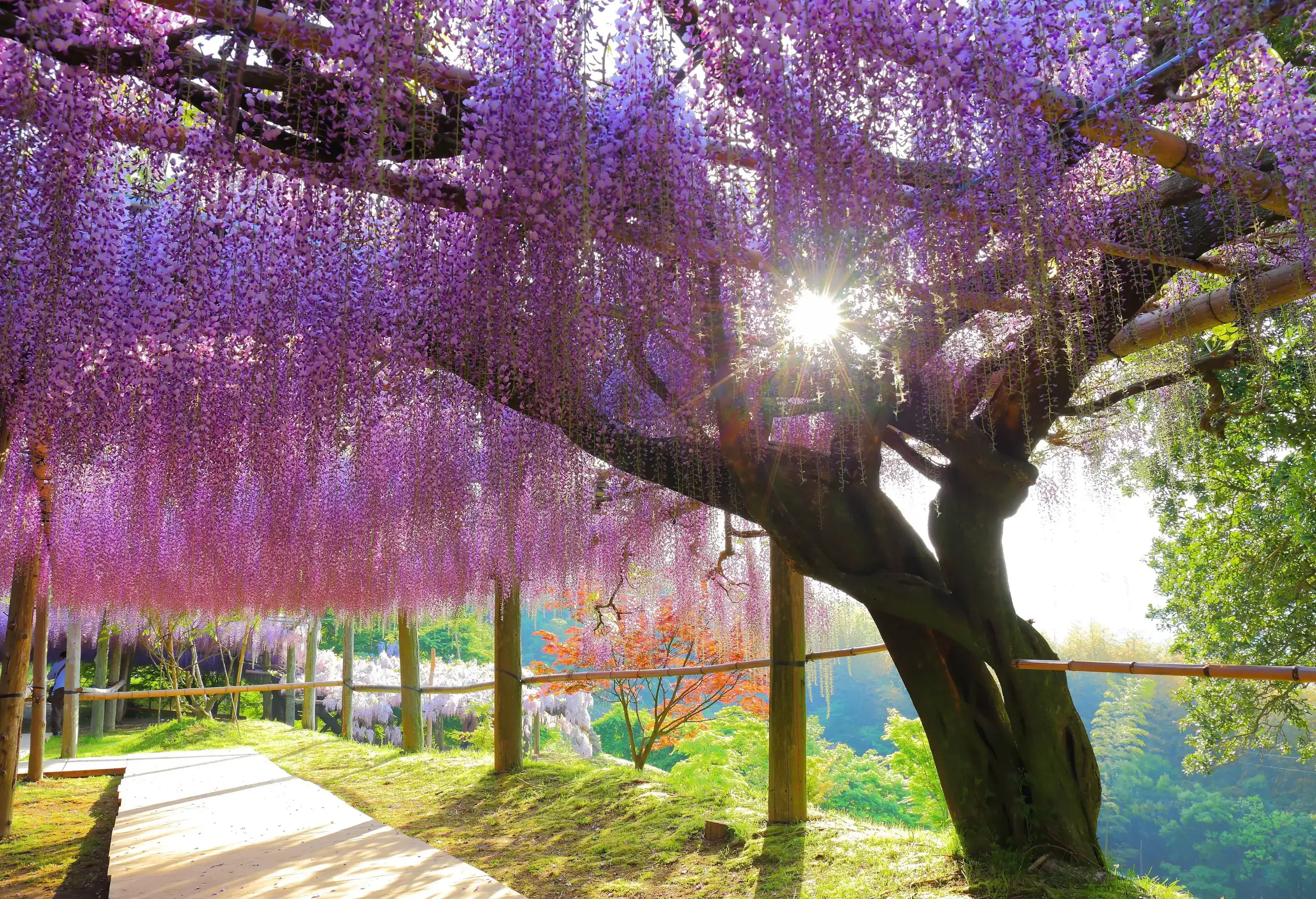
Come in July for the Hakata Gion Yamakasa, a fantastic festival centred around a race of festive floats. But even outside this event, Fukuoka is well worth a trip, especially in summer. The Uminonakamichi Seaside Park is a huge outdoor space, perfect for flower viewing. Of course, there are countless cherry blossom trees, but also fields of tulips, hydrangeas, and sunflowers.
How to get from Fukuoka to Okinawa: unfortunately, flights can cost up to £124 in August, but unless you are a really good swimmer, you will need to jump on a plane to get to Okinawa.
Days 4–7: Okinawa
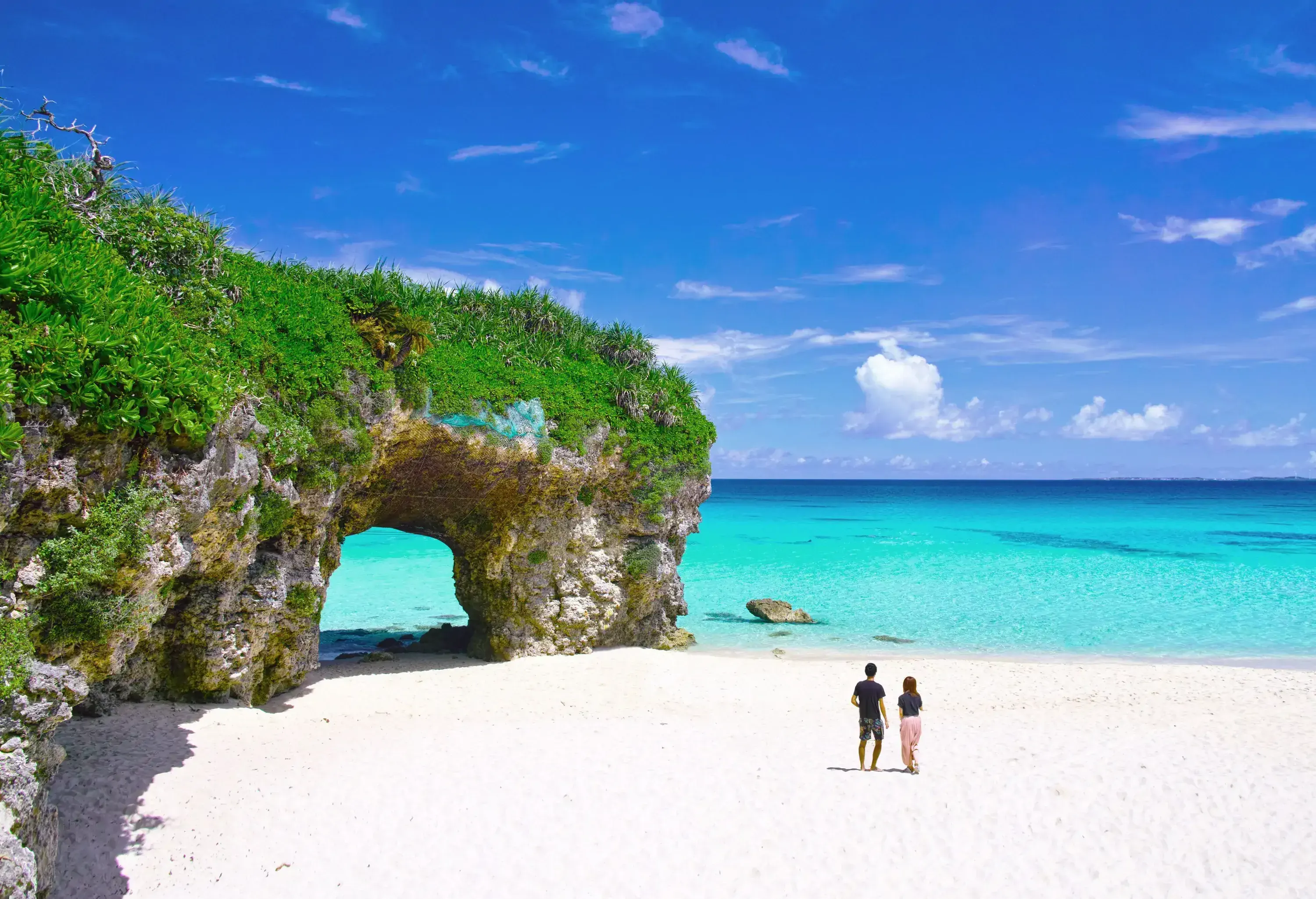
Often called the Hawaii of Japan, Okinawa is the place for a beach holiday. I recommend you head to the Makishi market in Naha to try local delicacies.
Okinawa is one of the best places in Japan for scuba diving and snorkelling. Plenty of tours will take you to the best spots, but for the most beautiful beaches make sure you visit Ishigaki Island.
Flight prices are based on flight searches made on KAYAK & associated brands in the period between 13.08.2023 and 13.08.2025 for flights with a departure between 01.01.2024 and 31.12.2025 from any UK airport. All prices are average prices for Economy return tickets. Prices may vary and savings cannot be guaranteed. Percentages for changes in searches are approximate.
Domestic flight prices are based on flight searches made on KAYAK & associated brands in the period between 13.08.2023 and 13.08.2025 for domestic flights within Japan with a departure between 01.01.2024 and 31.12.2025. All prices are average prices for Economy return tickets. Prices may vary and savings cannot be guaranteed. Percentages for changes in searches are approximate.

